Jun Kaneko came to the United States in 1963 to study painting. Born in Nagoya, Japan in 1942, Kaneko’s innate artistic talent was recognized at an early age by his parents, who enrolled him in painting and drawing classes with local Nagoya artist Satoshi Ogawa. However, by the age of twenty-one Kaneko had advanced beyond what Ogawa could teach him, so the young artist was sent to the United States to continue his studies. An American friend of Ogawa’s, the ceramicist Jerry Rothman, agreed to pick Kaneko up at the Los Angeles airport.
Upon his arrival in L.A., Rothman met Kaneko at the airport and drove him to the home of Fred and Mary Marer, who were avid collectors of contemporary ceramics, and who were instrumental in cultivating the young artist’s interest in working with clay. Kaneko recalls that when Rothman dropped him off at the Marer residence and told him in his broken Japanese that “this old couple” lived there, he promised he would return in a few hours. Kaneko, who spoke no English at all, was confused and astonished at being left alone with these strangers. He remembers that Rothman did not return until the next day, and only then to tell Kaneko that he would be staying with the Marers for a while. Of course, they had already directed him to the table for dinner and shown him where to sleep the night before. Fortuitously, the Marers were soon to go on vacation, leaving the young artist to house-sit their remarkable ceramic collection.
“I couldn’t believe it. That’s the reason I started ceramics!” Kaneko says. “Fred and Mary lived in this three-bedroom apartment. The front room – as soon as you open the door you walk into the living room — there are plate forms all over the floor, you really have to watch where you are going or you almost step on everything. These were Pete Voulkos’ plates, Kenny Price’s, Billy Al Bengston’s, Henry Takemoto’s — who today everybody knows — all this amazing stuff! Once I saw all of this, it was impossible not to be interested in ceramics. Walls, shelves, every place was jammed already. While they were gone, I built more shelves in the rooms and in the garage, and arranged all these hundreds of ceramic works, which gave me the chance to do some close observation. So when they came home, they were very surprised.” Kaneko’s exposure to the expansive Marer collection inspired a curiosity and admiration for ceramic art, and the Marers generously invited their houseguest to the ceramics studios of their friends, as well as to museums and exhibitions of ceramic art.
Fred Marer, though not a practitioner, was deeply embedded in the modernist ceramic art scene of the 1960s . He was a close friend and confidant of master ceramicists such as Peter Voulkos, Paul Soldner, John Mason, as well as Jerry Rothman, all torchbearers in the California Clay Movement. Kaneko became increasingly enthralled with the idea of working with clay, and in November of 1963 he began to work in the medium in the studio of Paul Soldner at Scripps College.
Meanwhile, as a student at the Chouinard Art Institute, Kaneko continued to study painting, drawing, and printmaking. Yet he also maintained his interest in ceramic art. In 1964 he spent the summer working with Rothman before enrolling in formal ceramics courses that fall. Kaneko’s work from this period reveals his foundation as a painter, consisting largely of single slabs and slab-built vessels. He explains, “I started as a painter, so to go from a two-dimensional to a three-dimensional idea was difficult. It took me a long time, and struggle, to understand what three-dimensional means. It was obvious and natural for me to make a flat piece and paint on it.”
Soon, however, Kaneko began to move on to more abstract and sculpturally oriented clay forms. His talent with the medium progressed quickly, and by1967 he was awarded an Archie Bray Foundation Grant for a residency at the original brick factory and art compound in Montana, where Kaneko’s creativity continued to expand the scale and type of work he was producing. His three-legged sculptures known as Sanbon Ashi were first produced during his Bray residency, and these forms would become the signature clayworks of his early years.
Following this residency, Kaneko was invited by Peter Voulkos to spend time in his studio at the University of California, Berkeley. Kaneko spent six months as a studio assistant, taking in both Voulkos’s technique as well as his kinetic and innovative approach to his work. Kaneko recalls, “He didn’t really give me advice. I didn’t ask for it. But I learned from observing how he developed things, really pushed things. You could see how he got things where he wanted them.” Kaneko and Voulkos formed a lifelong friendship, working and exhibiting together many times in the ensuing decades.
In fact, it was a joint exhibition with Voulkos that sealed Kaneko’s acceptance in 1969 into a Masters program at Claremont College Graduate School, a remarkable accomplishment for an artist without an undergraduate degree. At Claremont, again under the tutelage of Paul Soldner, Kaneko experimented extensively in ceramics, photography, sound, and performance, expanding and challenging his creative and stylistic instincts. The use of painterly stripes, dots, and spirals that Kaneko developed during this period has remained a signature element of his work.
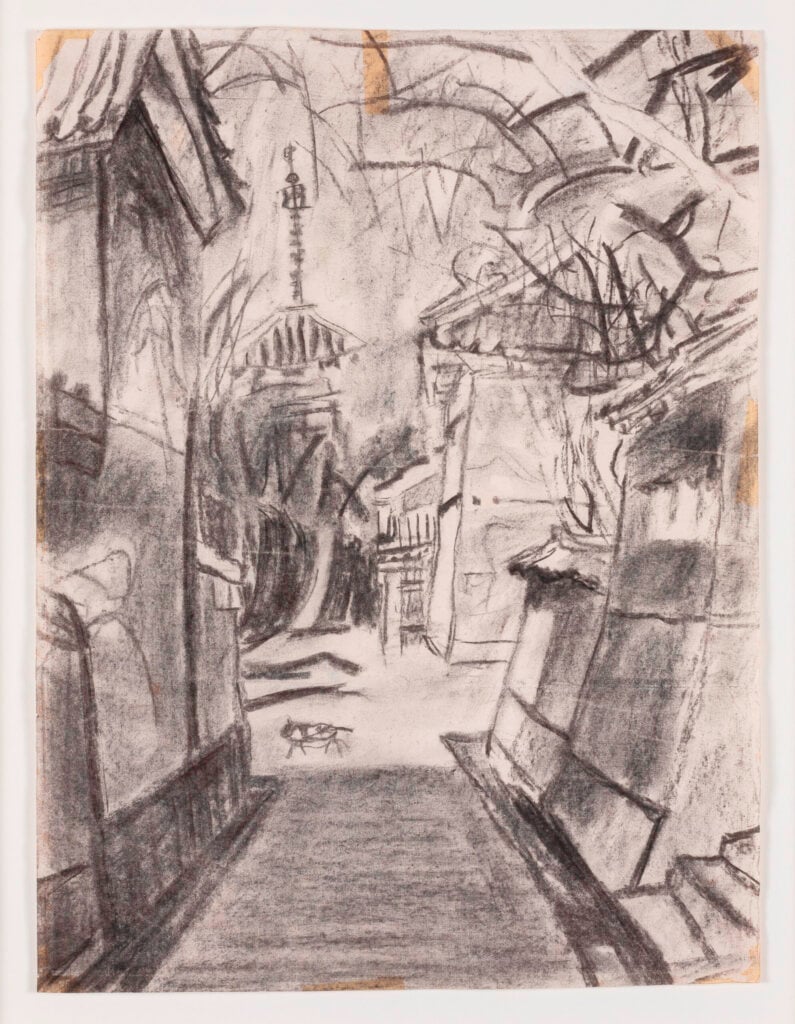
Untitled, Drawing
1962
Charcoal on paper, 18.25 x 13.75 inches.
Photo: Colin Conces
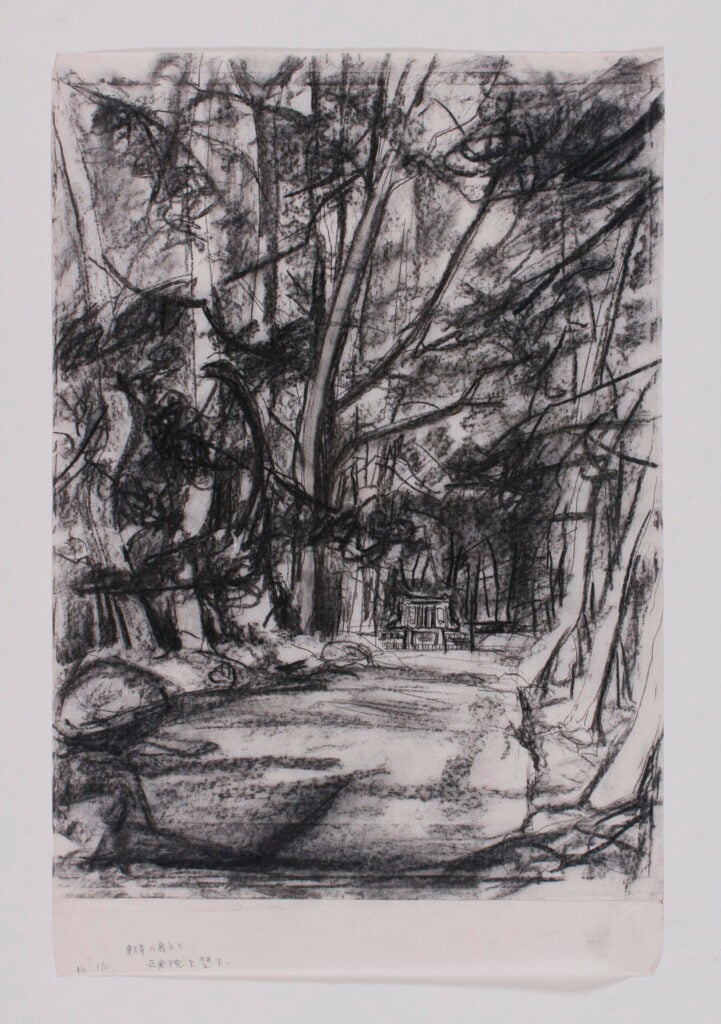
Untitled, Drawing, c.
1962
Charcoal on paper, 27.5 x 18 x inches. Collection of the Ree & Jun Kaneko Foundation, Omaha, NE, USA.
Photo: Colin Conces
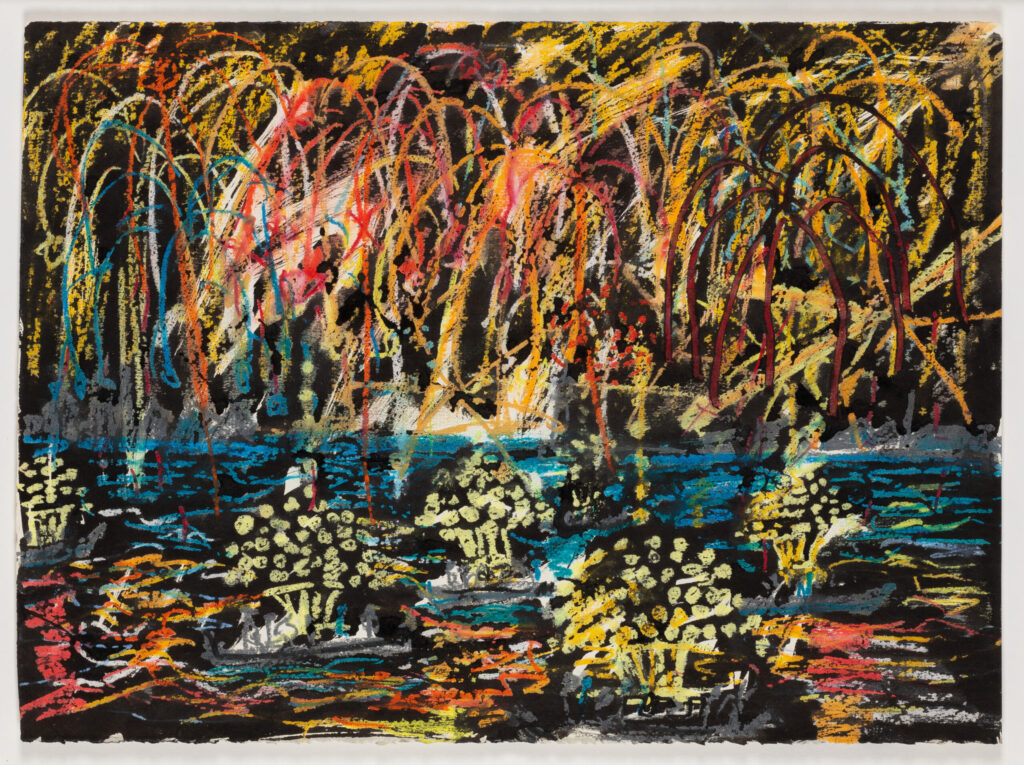
Untitled, Drawing
1963
Oil pastel and ink on paper, 15.5 x 21 inches.
Photo: Colin Conces
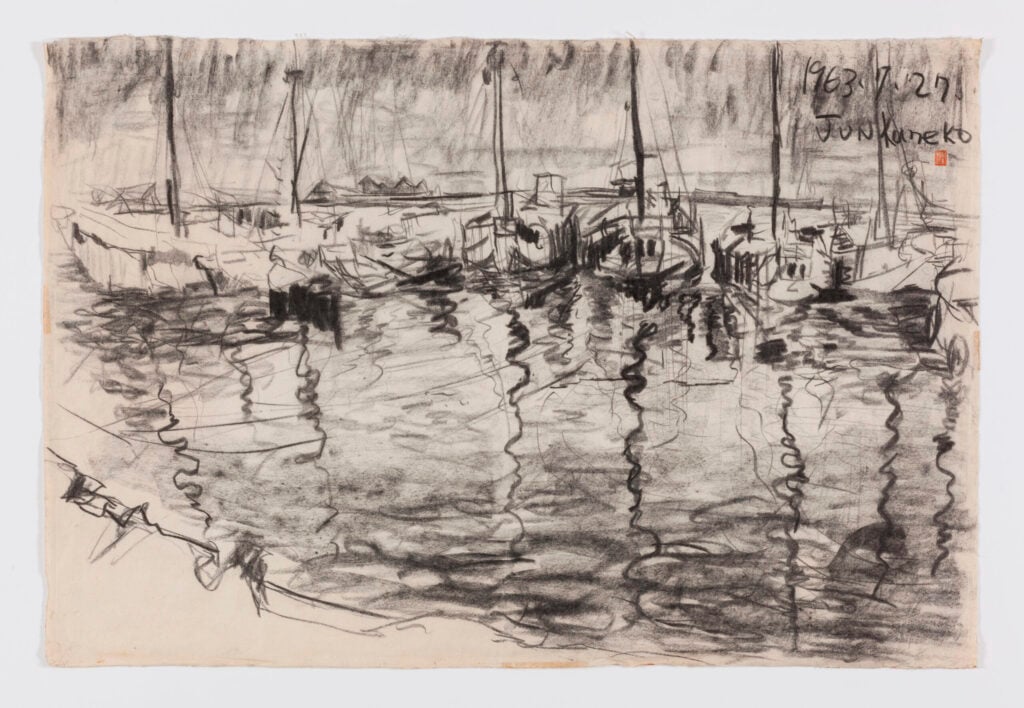
Untitled, Drawing
1963
Charcoal on paper, 24.5 x 36.5 inches.
Photo: Jun Kaneko Studio
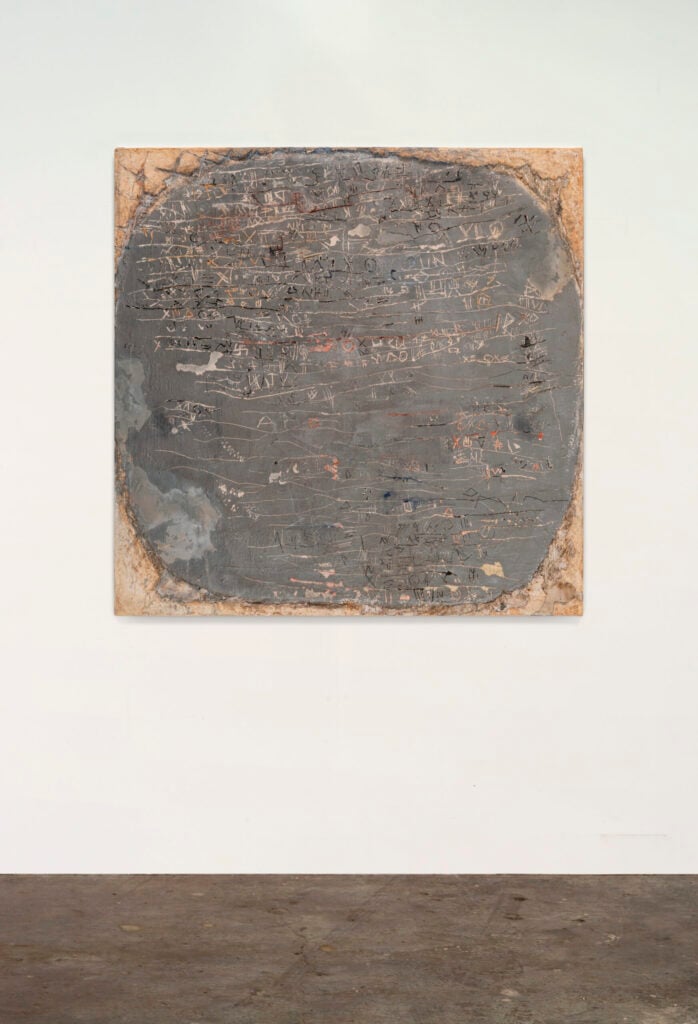
Untitled, Painting
1963
Oil paint and sand on canvas, 57.5 x 57 x 1.5 inches.
Photo: EG Schempf
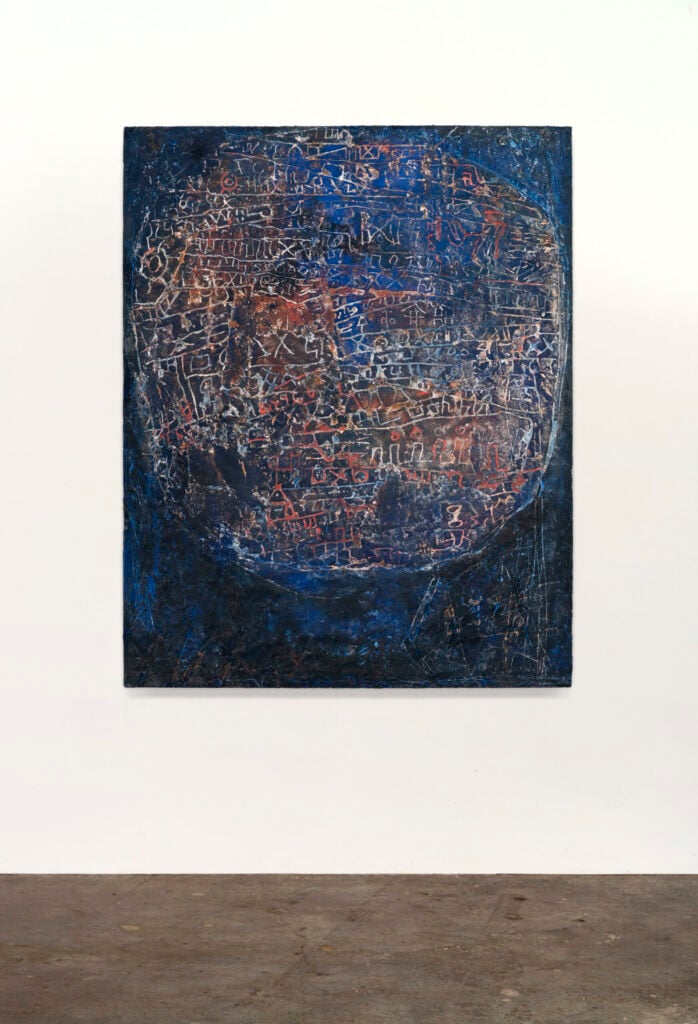
Untitled, Painting
1963
Oil paint and sand on canvas, 60 x 47.75 x 1.25 inches.
Photo: EG Schempf
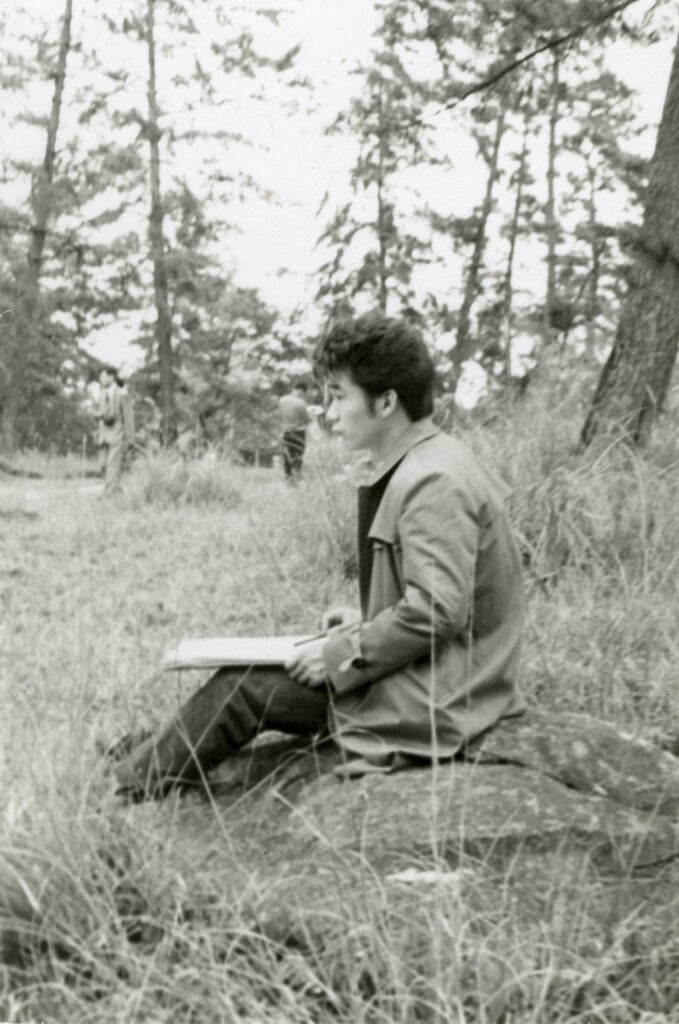
Jun drawing en plein air.
1963
Photo: Jun Kaneko Studio
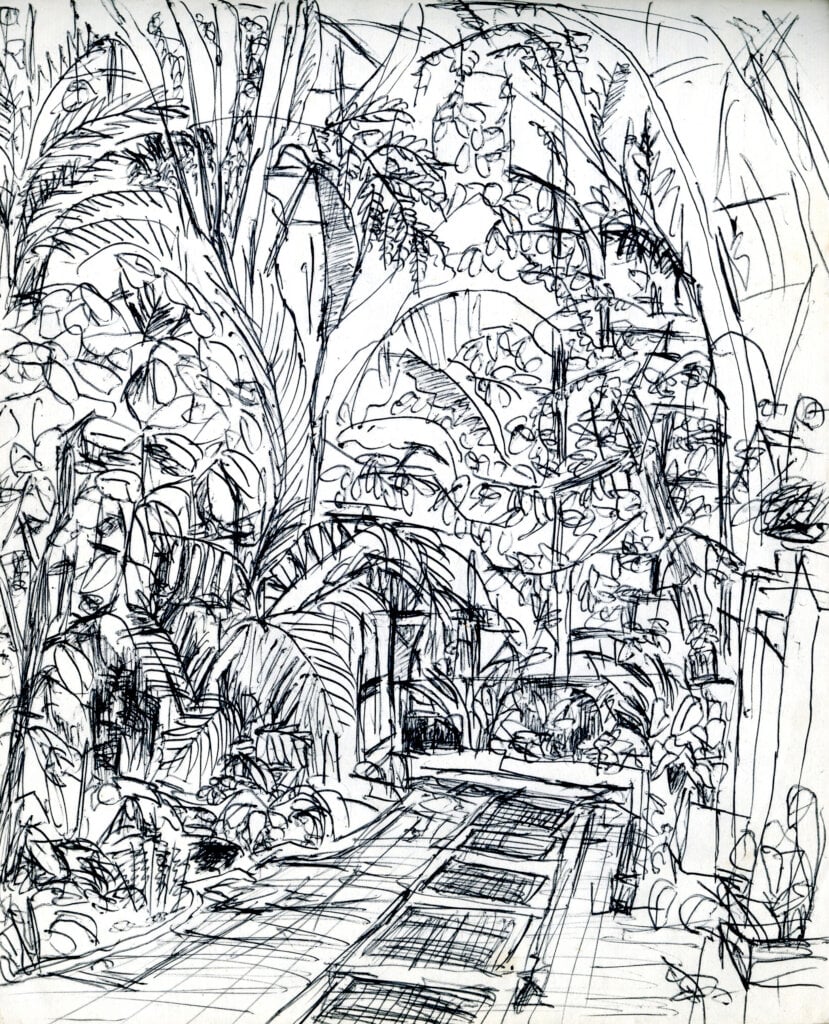
Sketchbook with drawing of a landscape
1963
Ink on paper, 9.5 x 7 inches.
Photo: Jun Kaneko Studio
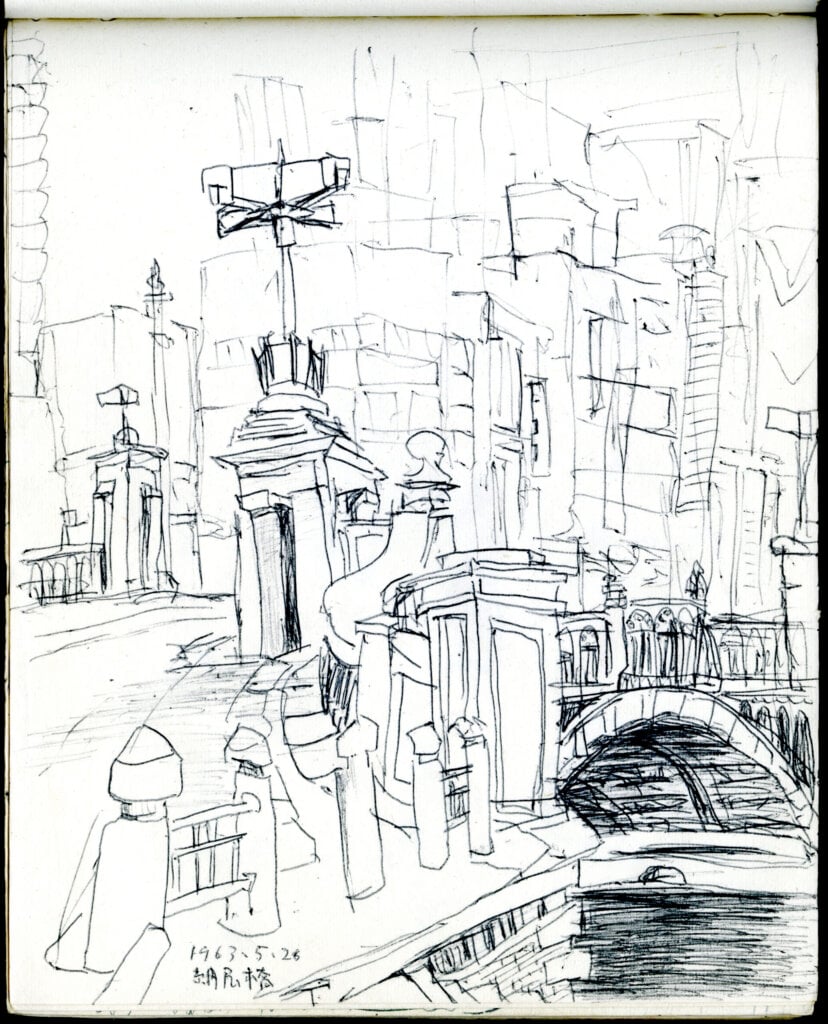
Sketchbook with drawing of a cityscape
1963
Ink on paper, 9.5 x 7 inches.
Photo: Jun Kaneko Studio
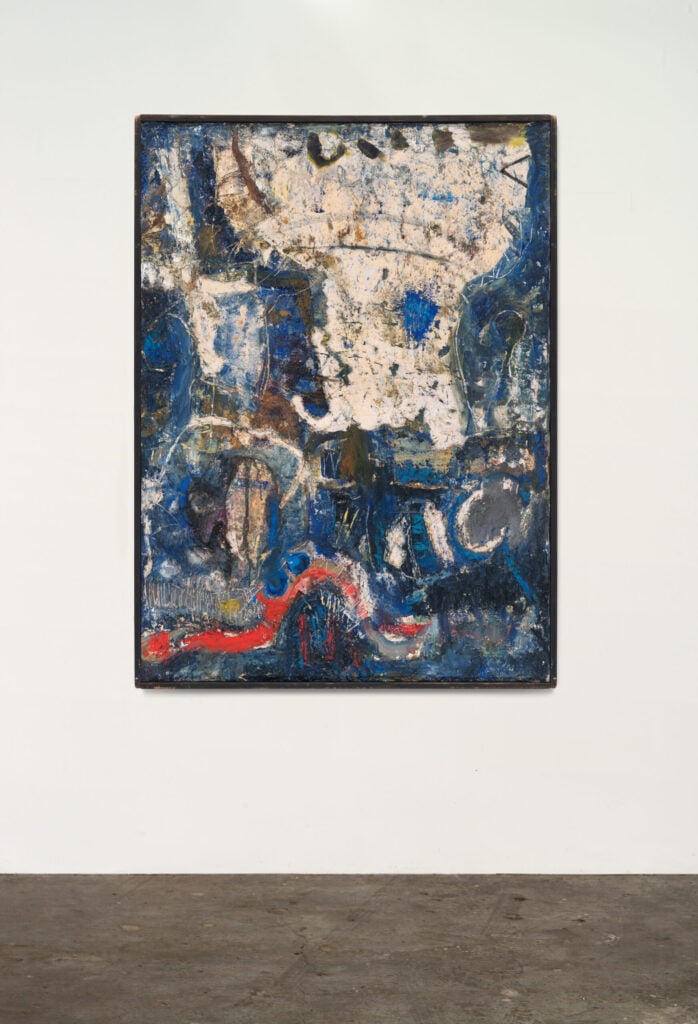
Untitled, Painting
1964
Oil paint and sand on canvas, 46 x 34.25 x 1.75 inches.
Photo: EG Schempf
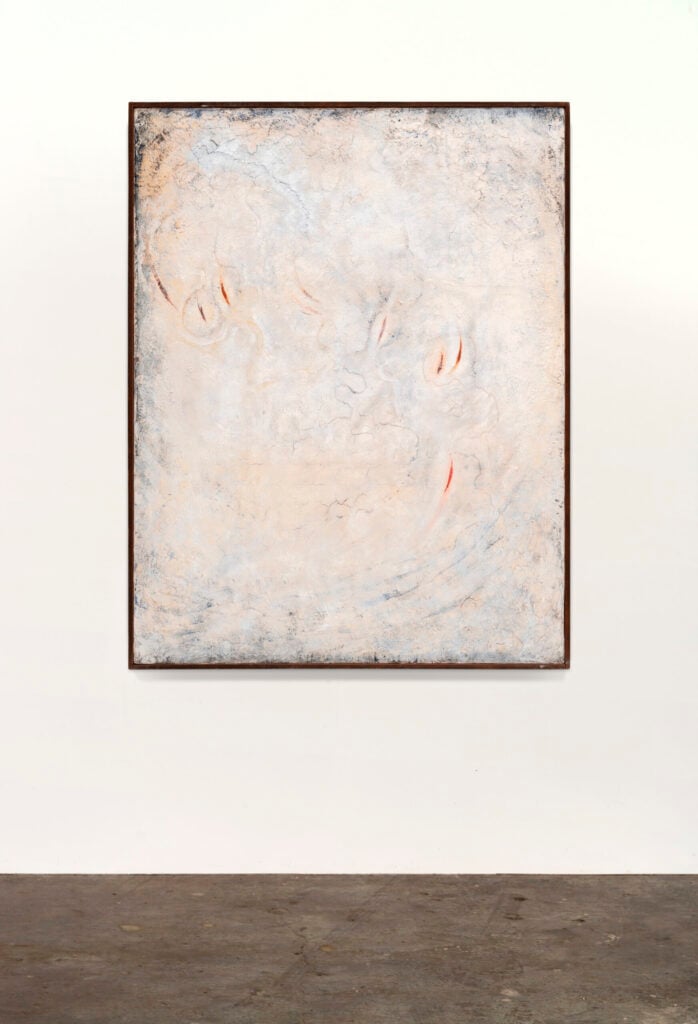
Untitled, Painting, c.
1964
Oil paint on canvas, 58.5 x 45.25 x 2 inches. Collection of the Ree & Jun Kaneko Foundation, Omaha, NE, USA.
Photo: EG Schempf
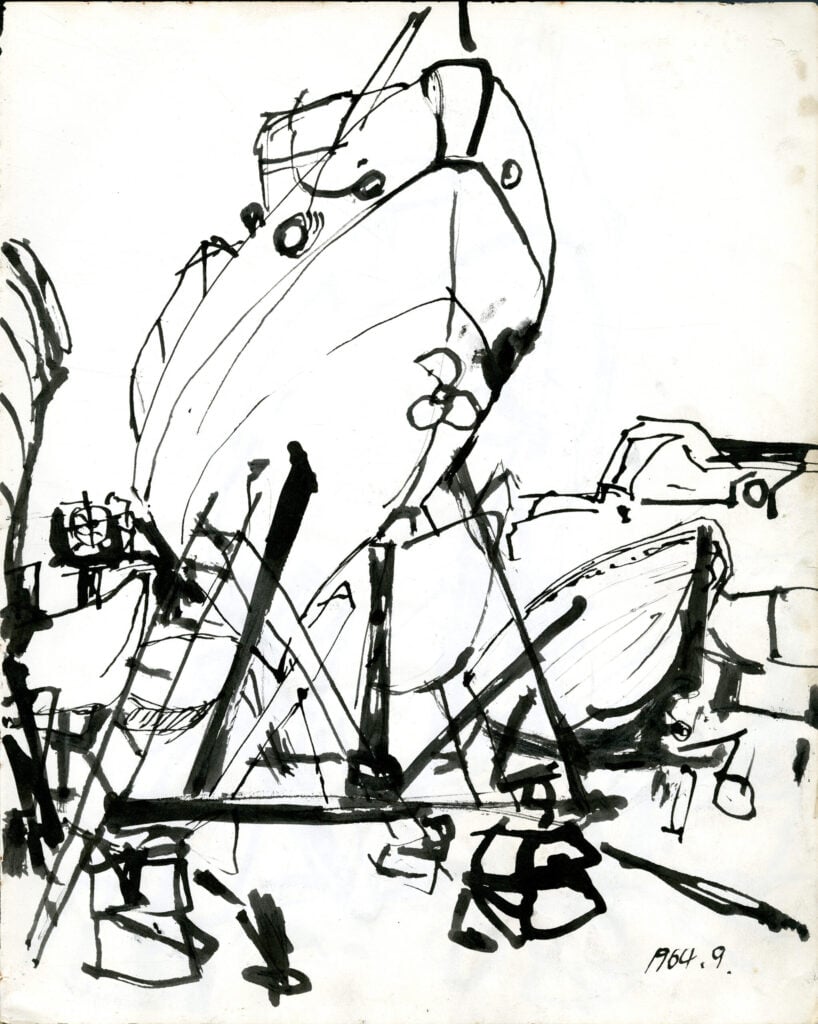
Sketchbook with drawing of boats
1964
Ink on paper, 13.75 x 11 inches.
Photo: Jun Kaneko Studio

Sketchbook with drawing of plants
1964
Pastel on paper, 13.75 x 11 inches.
Photo: Jun Kaneko Studio
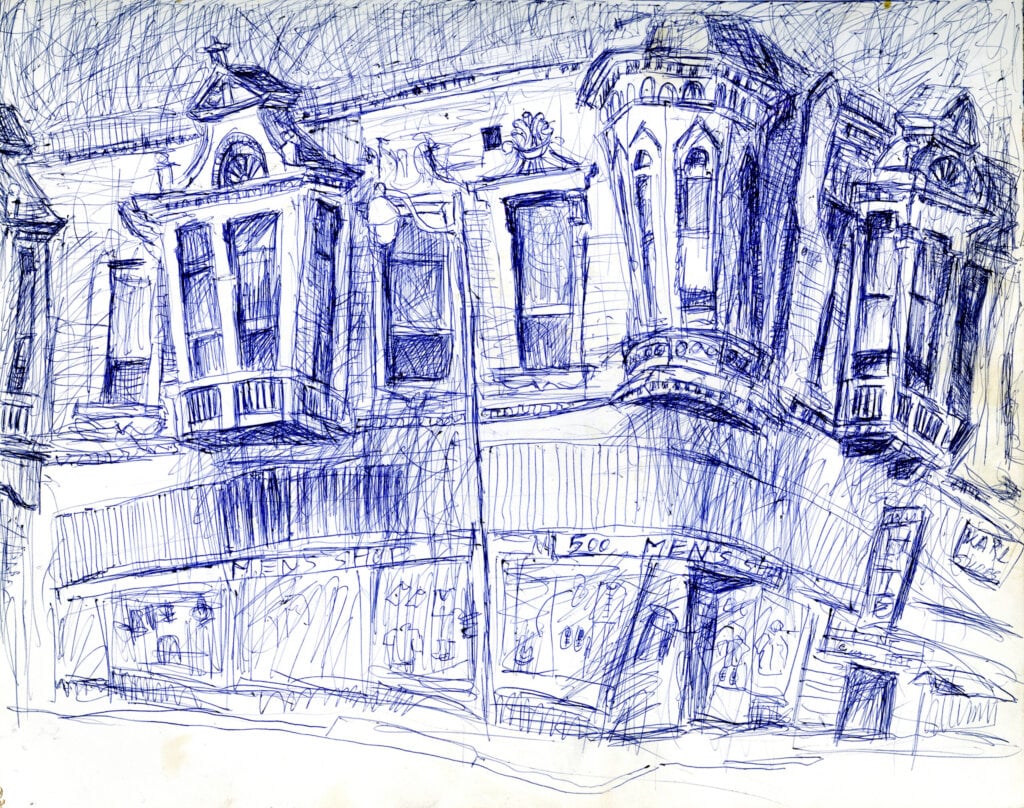
Sketchbook with drawing of a building in Williamsburg
1964
Ink on paper, 13.75 x 11 inches.
Photo: Jun Kaneko Studio
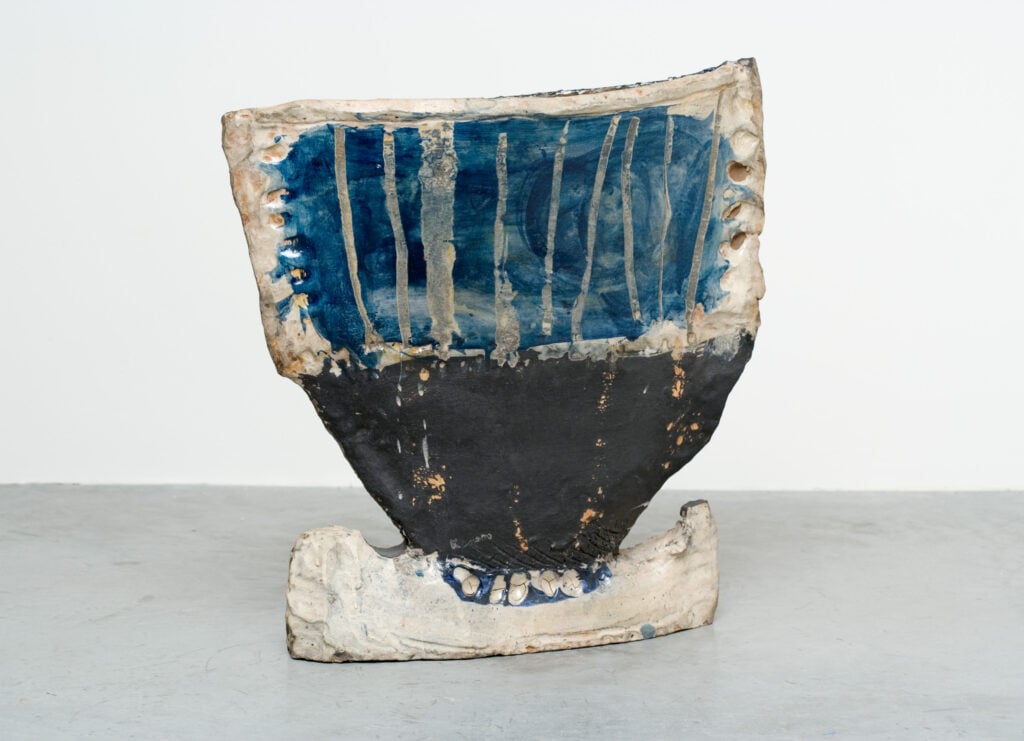
Sankaku
1965
Hand built and glazed ceramics, 22.5 x 22 x 8 inches. Collection of the Ree & Jun Kaneko Foundation, Omaha, NE, USA.
Photo: Dirk Bakker
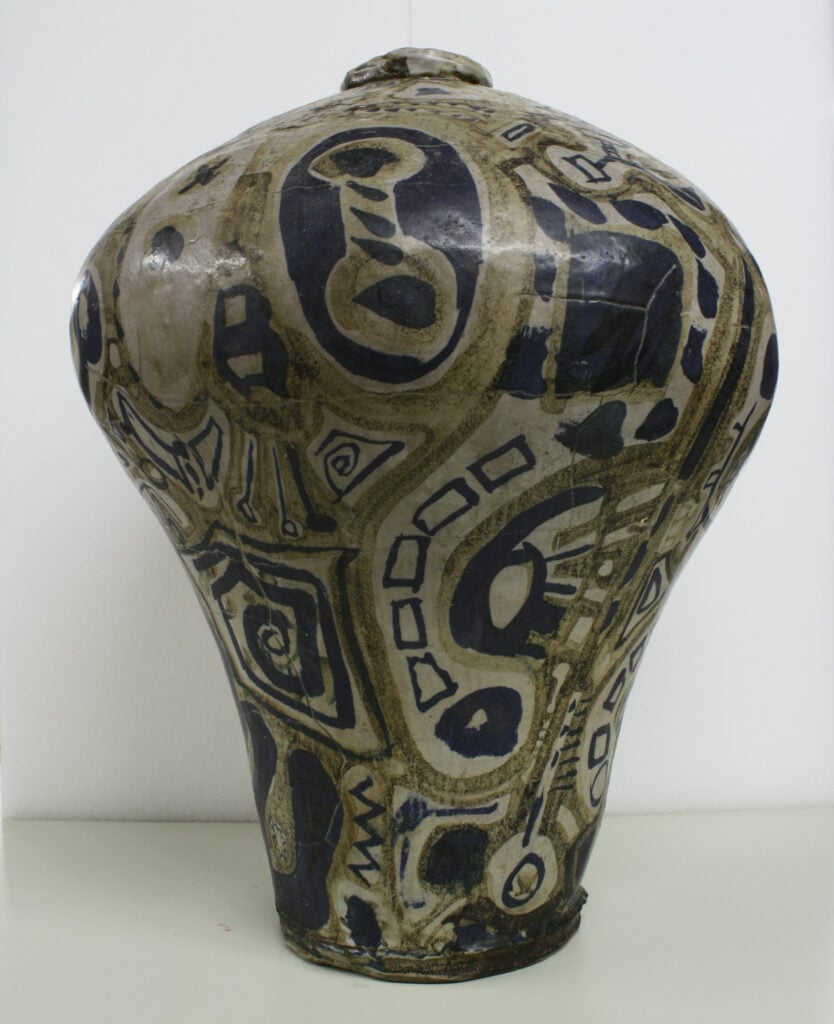
Untitled, Vessel
1965
Hand built and glazed ceramics, 26 x 20 x 20 inches. Collection of the Ruth Chandler Williamson Gallery, Scripps College, Claremont, CA, USA.
Photo: Jun Kaneko Studio

Jun with a selection of his ceramic works.
1966
Photo: Jun Kaneko Studio
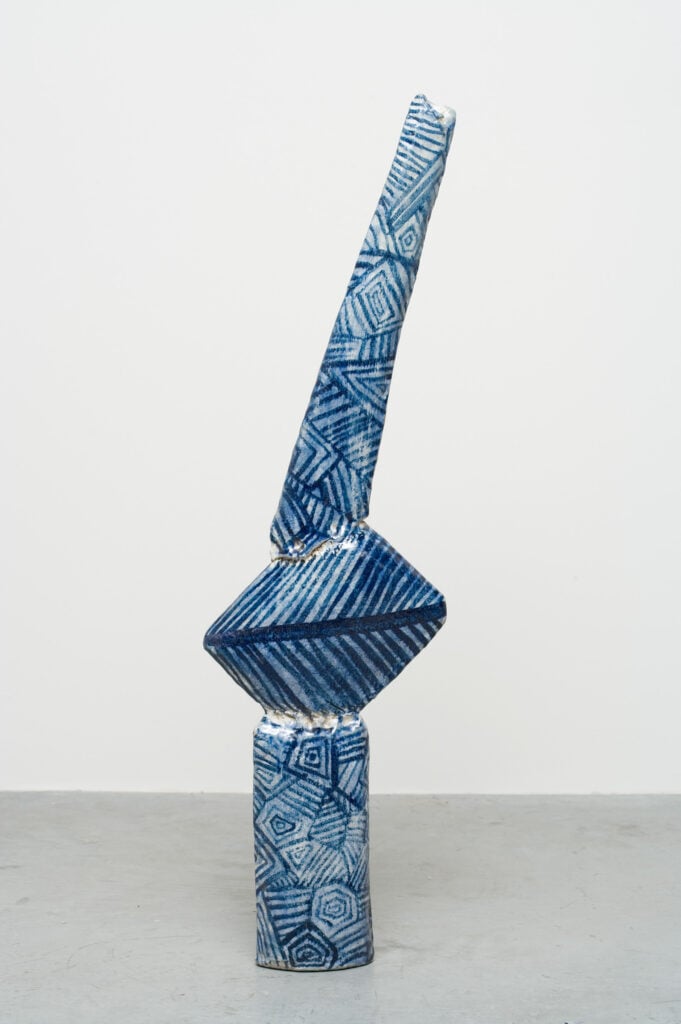
Untitled, Construction
1967
Hand built and glazed ceramics, 41.5 x 12 x 4.25 inches.
Photo: Dirk Bakker
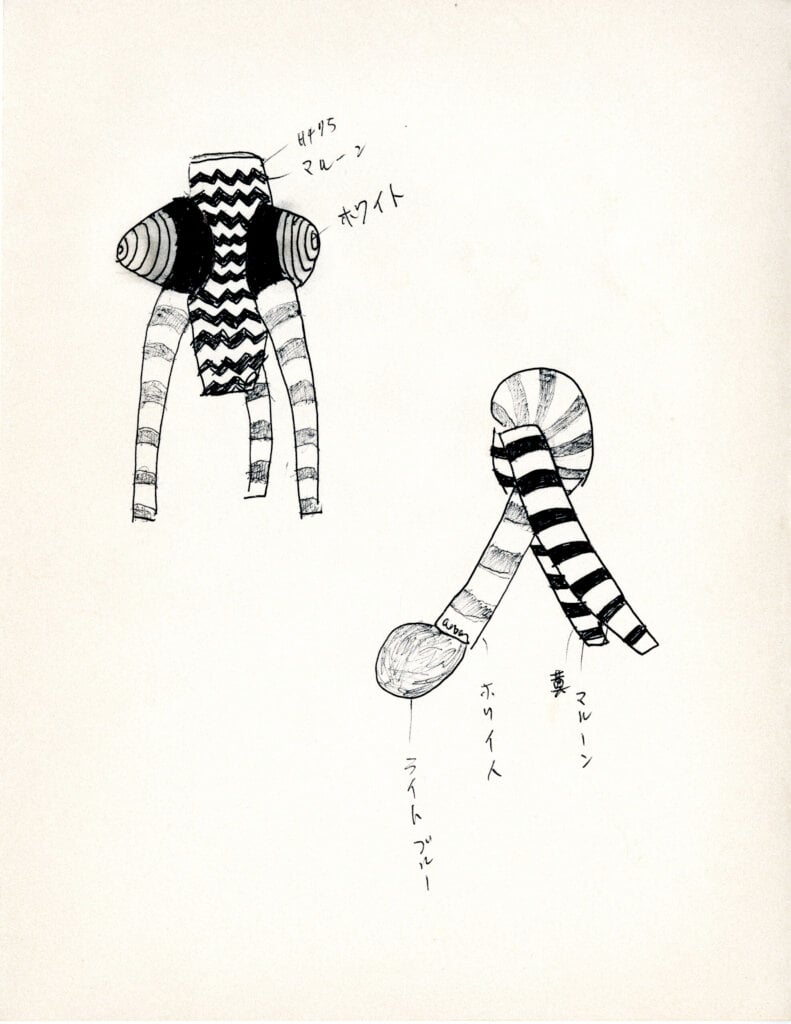
Sketchbook with designs for two Sanbon Ashi, c.
1967
Ink on paper.
Photo: Jun Kaneko Studio
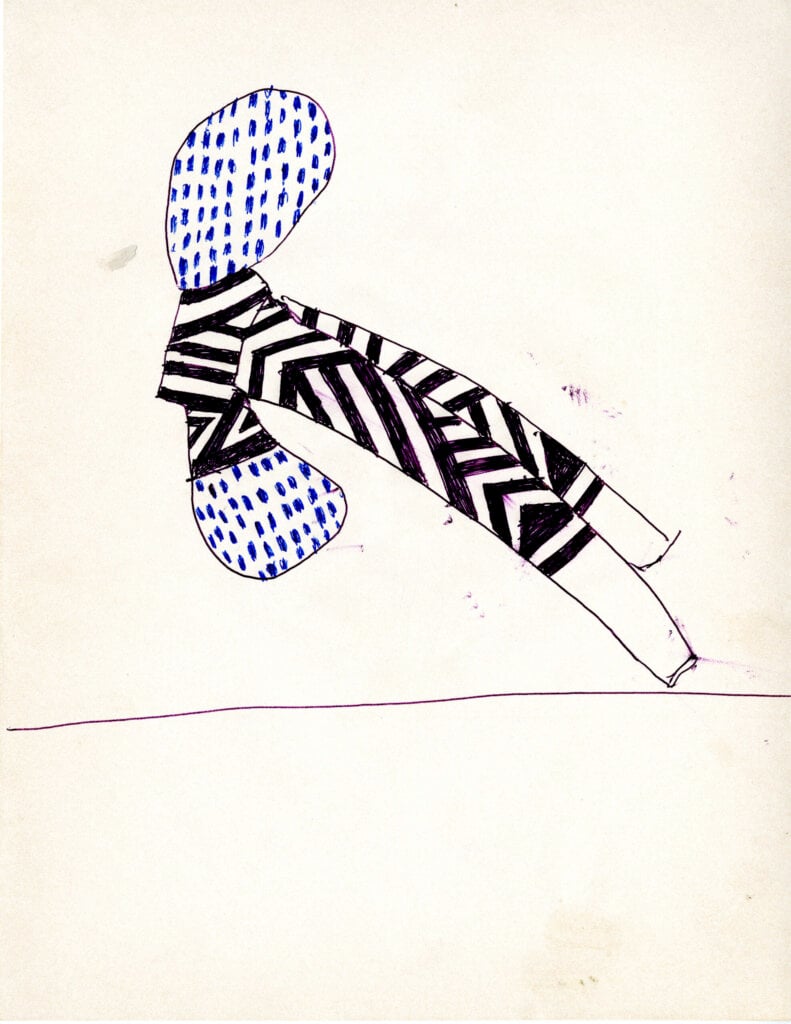
Sketchbook with design for a Sanbon Ashi, c.
1967
Ink on paper.
Photo: Jun Kaneko Studio

Untitled, Construction
1968
Hand built and glazed ceramics, 43 x 14 x 14 inches.
Photo: Dirk Bakker
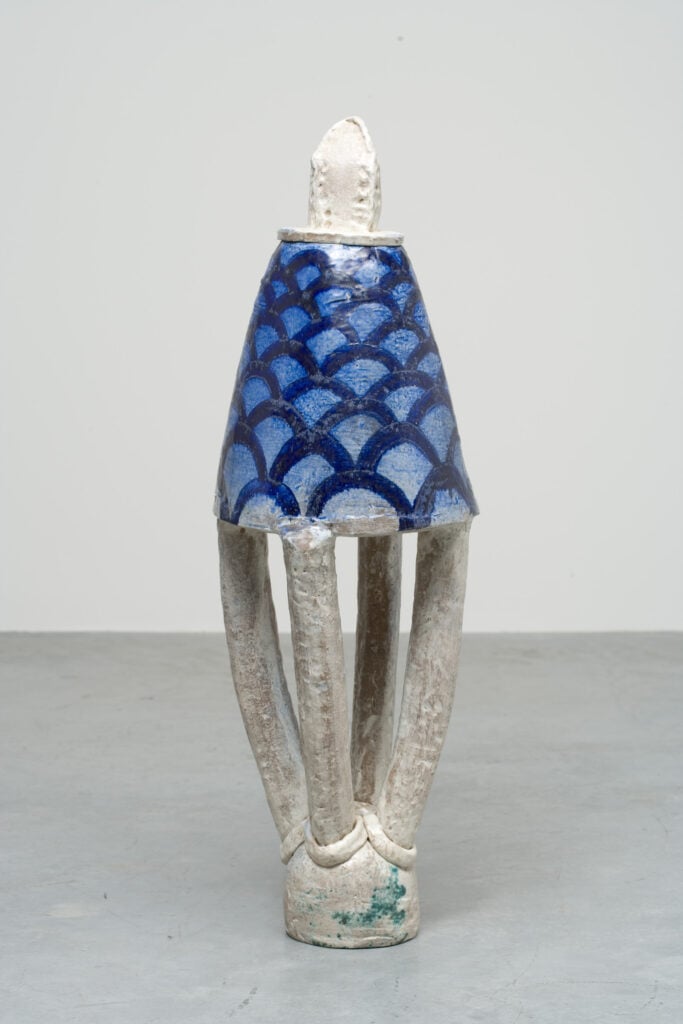
Untitled, Construction
1968
Hand built and glazed ceramics, 35 x 13 x 13 inches.
Photo: Dirk Bakker
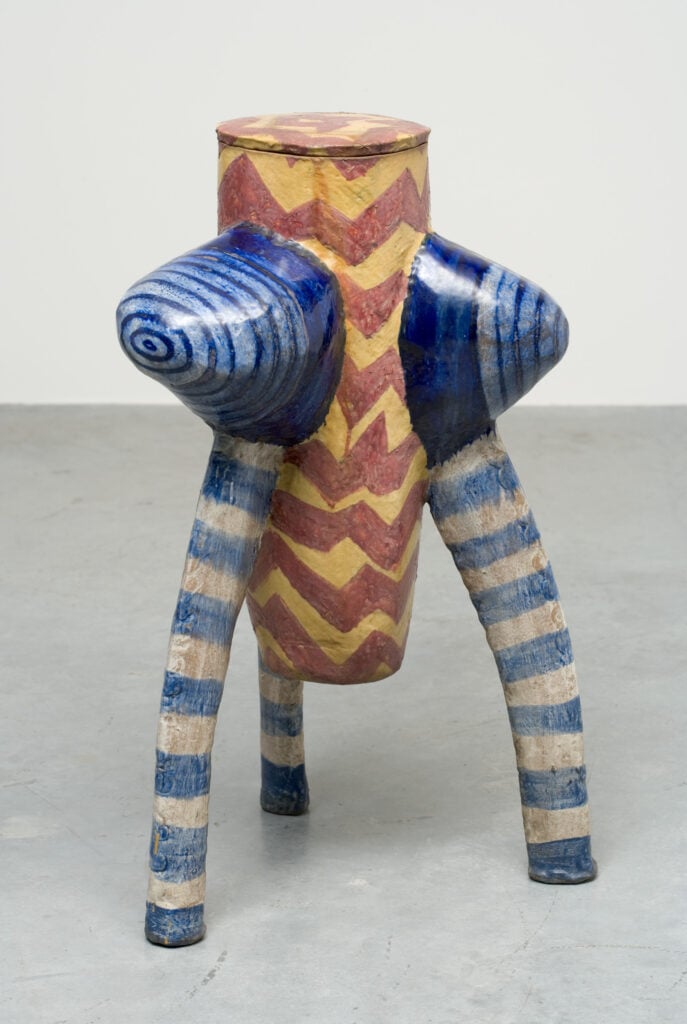
Untitled, Construction
1968
Hand built and glazed ceramics, 32 x 21 x 20 inches. Collection of the Ree & Jun Kaneko Foundation, Omaha, NE, USA.
Photo: Dirk Bakker
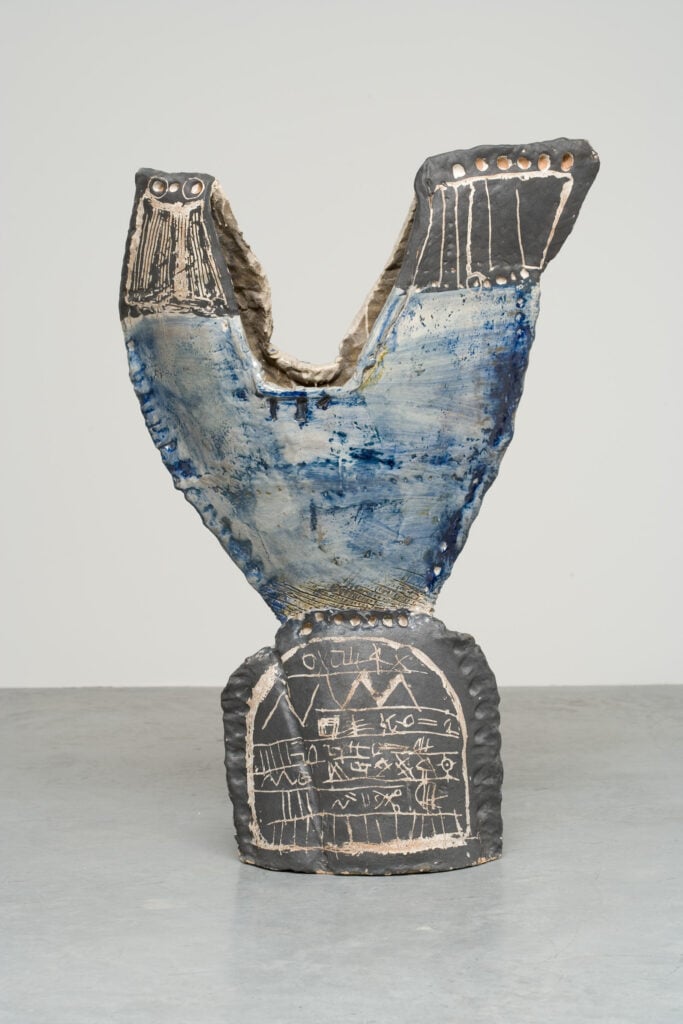
Untitled, Construction
1968
Hand built and glazed ceramics, 44.5 x 30 x 8 inches.
Photo: Dirk Bakker

Untitled, Construction
1968
Hand built and glazed ceramics, 33 x 14 x 4 inches.
Photo: Dirk Bakker

Untitled, Construction
1968
Hand built and glazed ceramics, 37 x 10 x 3 inches.
Photo: Dirk Bakker

Jun working at his studio
1968
Temple City, CA
Photo: Jun Kaneko Studio
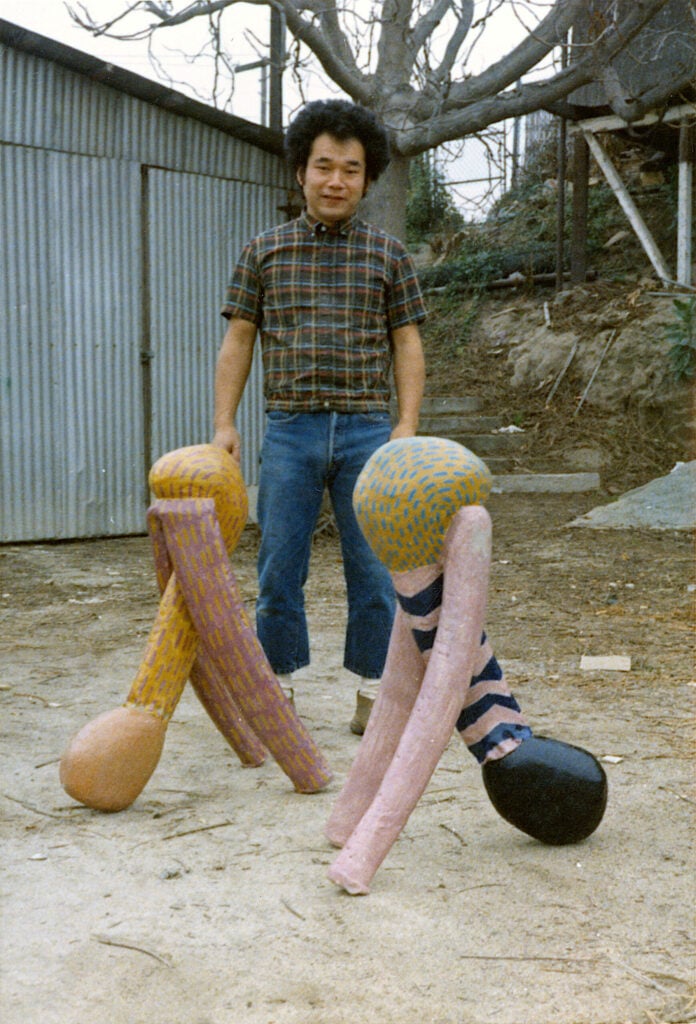
Jun Kaneko at his Temple City studio with two of his Sanbon Ashi sculptures.
1968
Hand built and glazed ceramics, approximately 33 x 20 x 16 inches each.
Photo: Jun Kaneko Studio
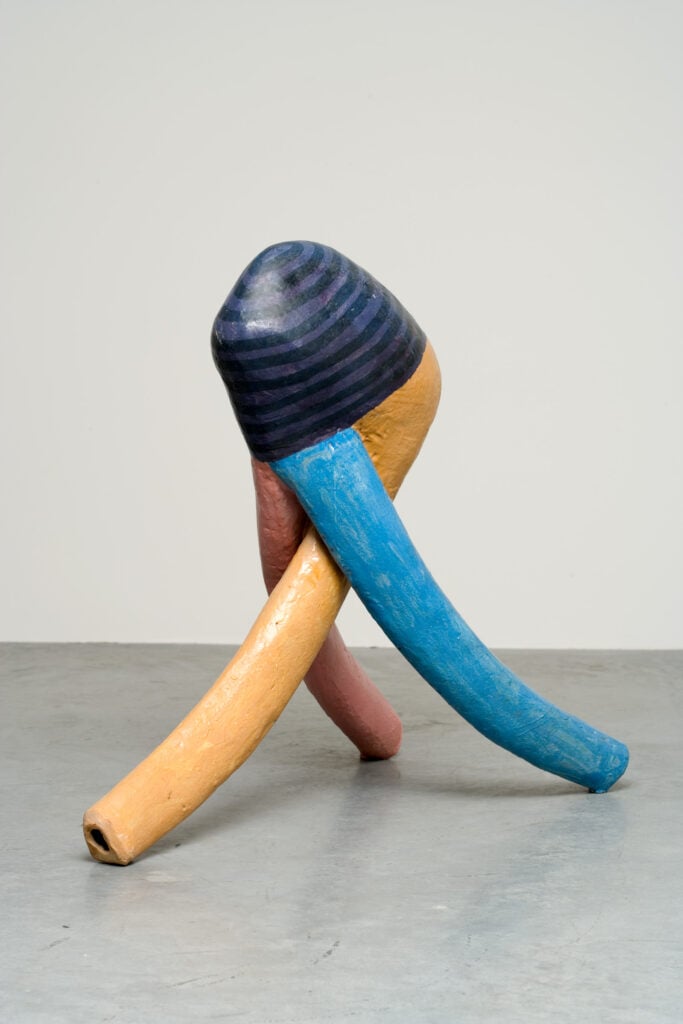
Untitled, Construction
1969
Hand built and glazed ceramics, 38 x 35 x 21 inches.
Photo: Dirk Bakker

Untitled, Construction
1969
Hand built and glazed ceramics, 29 x 30 x 20 inches.
Photo: Dirk Bakker
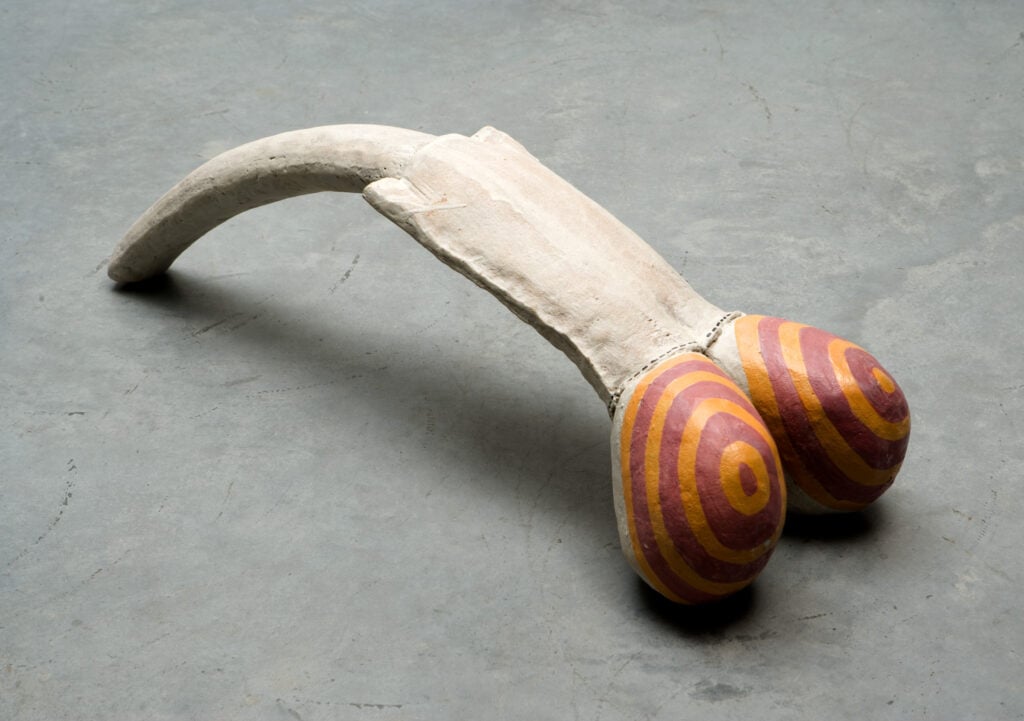
Untitled, Construction
1969
Hand built and glazed ceramics, 45.5 x 15 x 14.5 inches.
Photo: Dirk Bakker
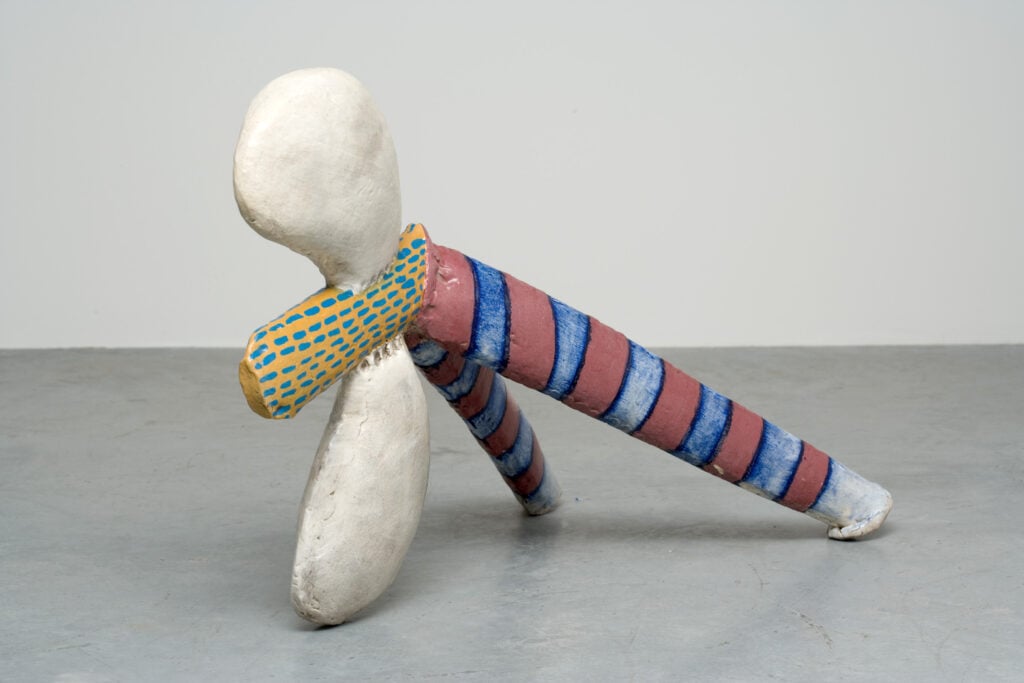
Untitled, Construction
1970
Hand built and glazed ceramics, 38 x 28 x 22 inches.
Photo: Dirk Bakker
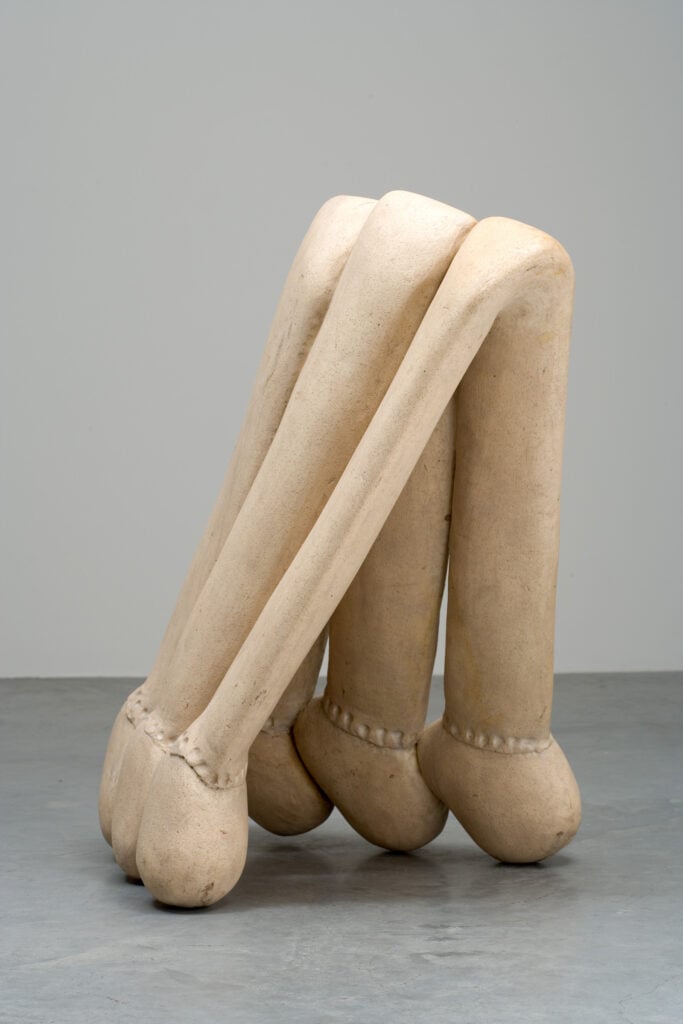
Untitled, Construction
1970
Hand built and glazed ceramics, 44 x 32 x 45 inches. Collection of the Ree & Jun Kaneko Foundation, Omaha, NE, USA.
Photo: Dirk Bakker
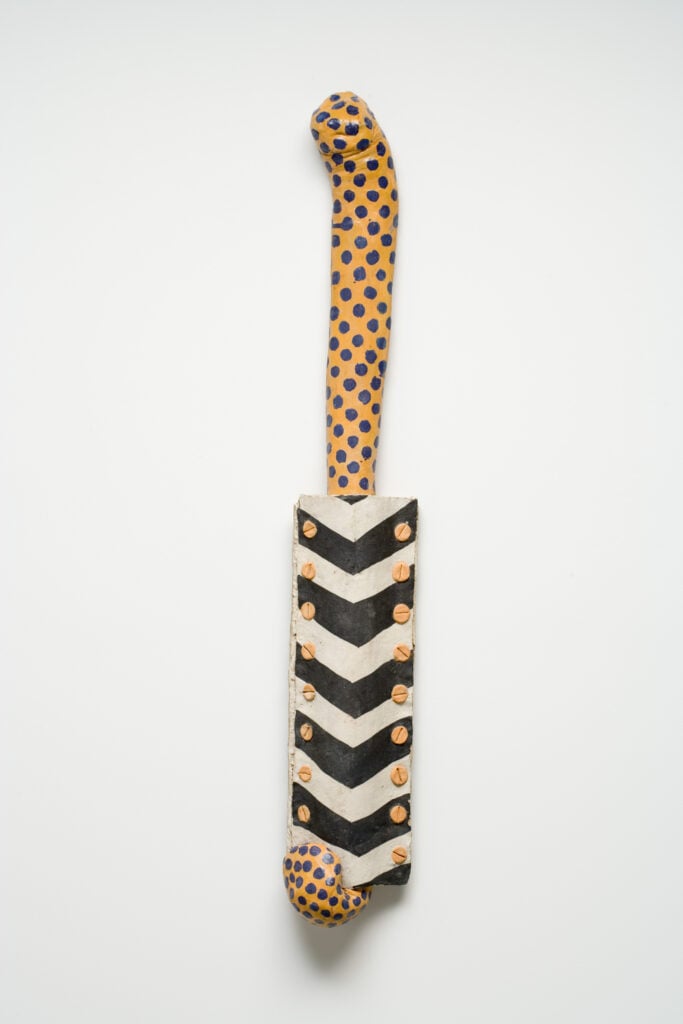
Untitled, Construction
1970
Hand built and glazed ceramics, 55 x 8.5 x 3.5 inches.
Photo: Dirk Bakker
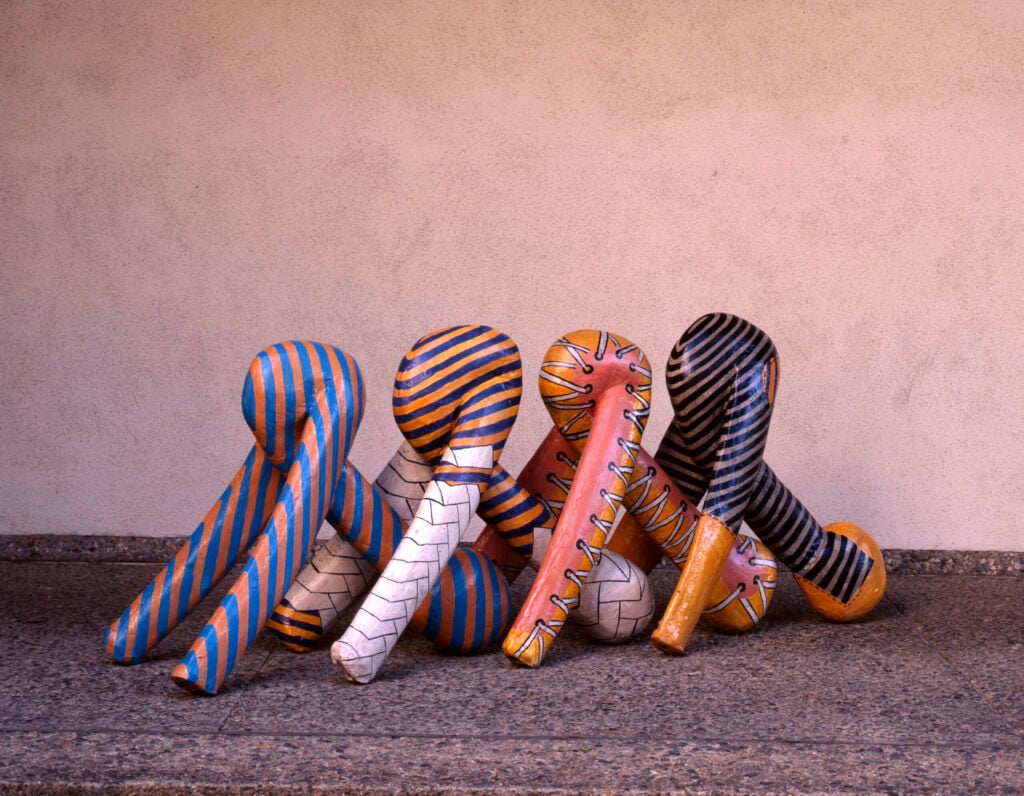
Sanbon Ashi
1971
Hand built and glazed ceramics, 30 x 35 x 20 inches each. Collection of the Ruth Chandler Williamson Gallery, Scripps College, Claremont, CA, USA.
Photo: Jun Kaneko Studio
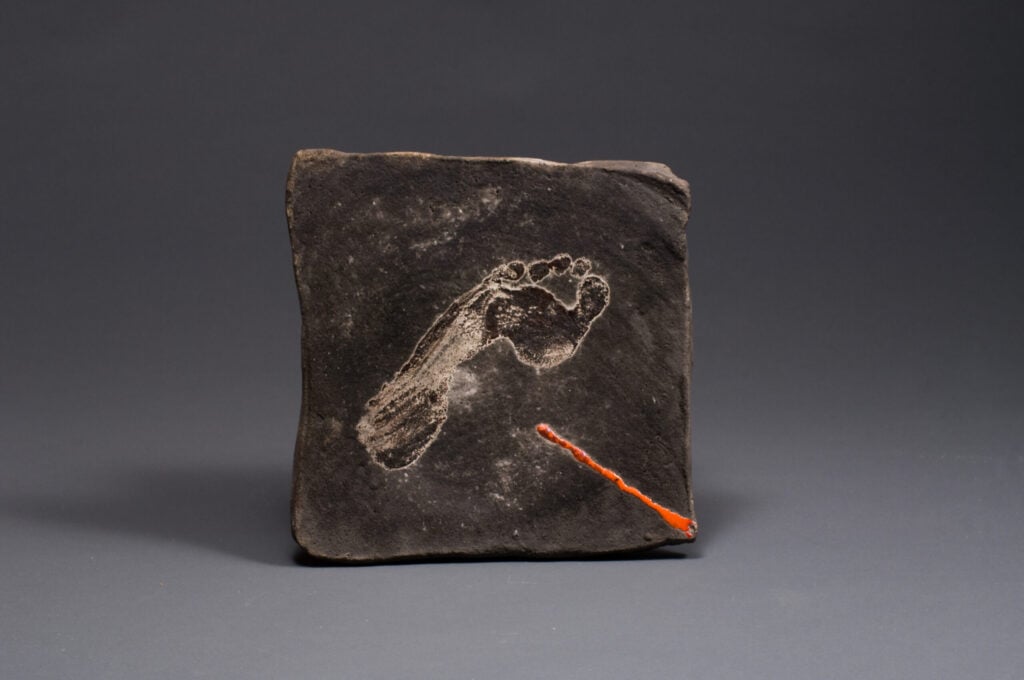
Untitled, Wall Slab
1971
Hand built and glazed ceramics, 13 x 12 x 1.7 inches. Collection of the Ree & Jun Kaneko Foundation, Omaha, NE, USA.
Photo: Jun Kaneko Studio
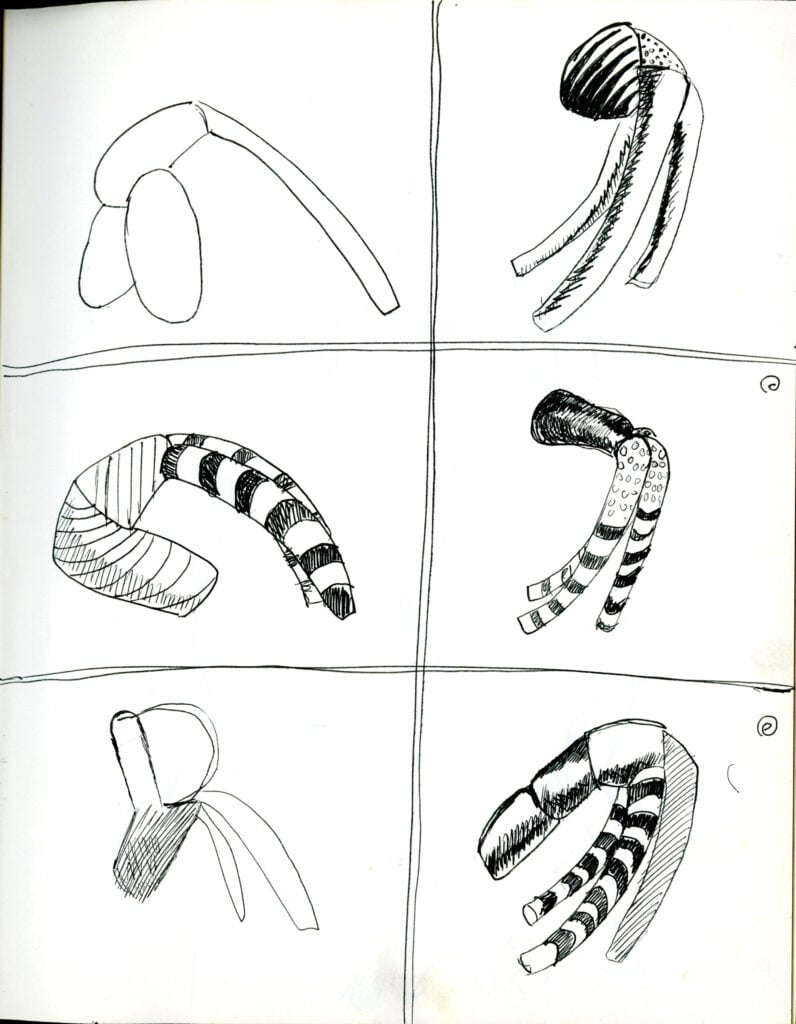
Sketchbook with designs for six Sanbon Ashi
1972
Graphite on paper, 11.25 x 8.75 inches.
Photo: Jun Kaneko Studio
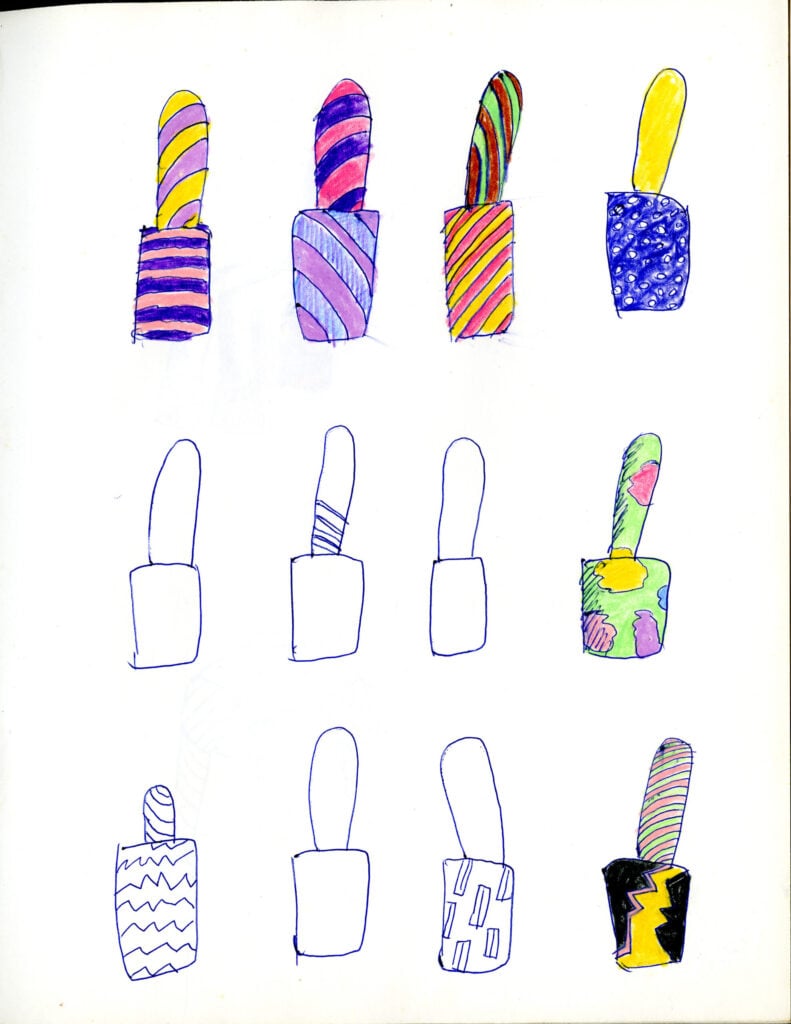
Sketchbook with designs for twelve paddle Constructions
1972
Ink and colored pencil on paper, 11.25 x 8.75 inches.
Photo: Jun Kaneko Studio
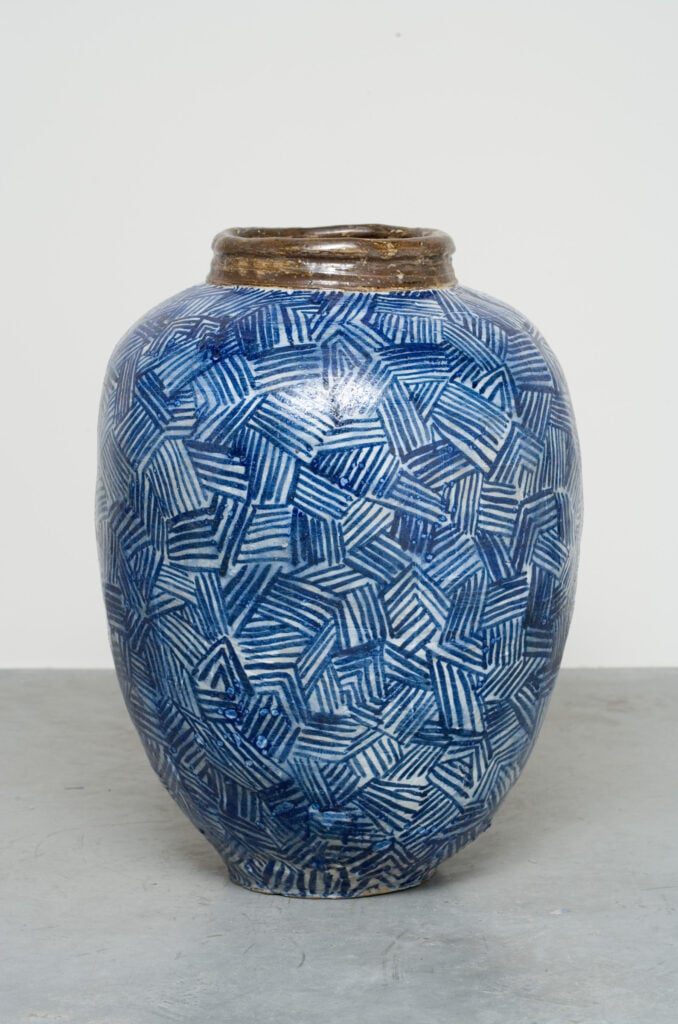
Untitled, Vessel
1973
Hand built and glazed ceramics, 30 x 20 x 20 inches. Collection of the Ree & Jun Kaneko Foundation, Omaha, NE, USA.
Photo: Dirk Bakker
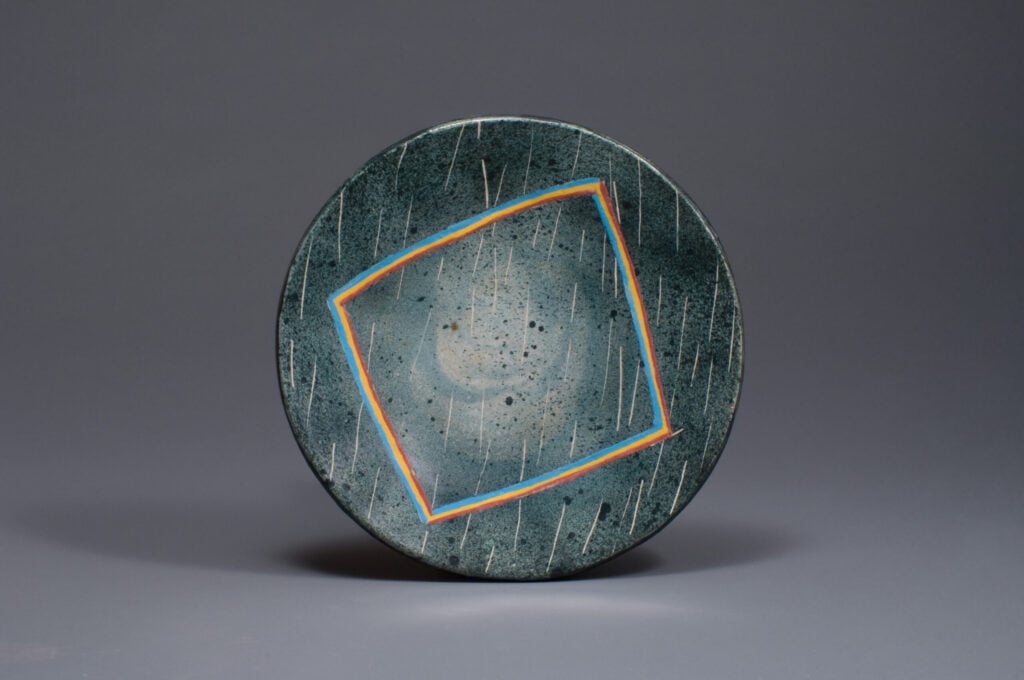
Untitled, Platter
1974
Hand built and glazed ceramics, 18 x 18 x 2 inches. Collection of the Ree & Jun Kaneko Foundation, Omaha, NE, USA.
Photo: Jun Kaneko Studio
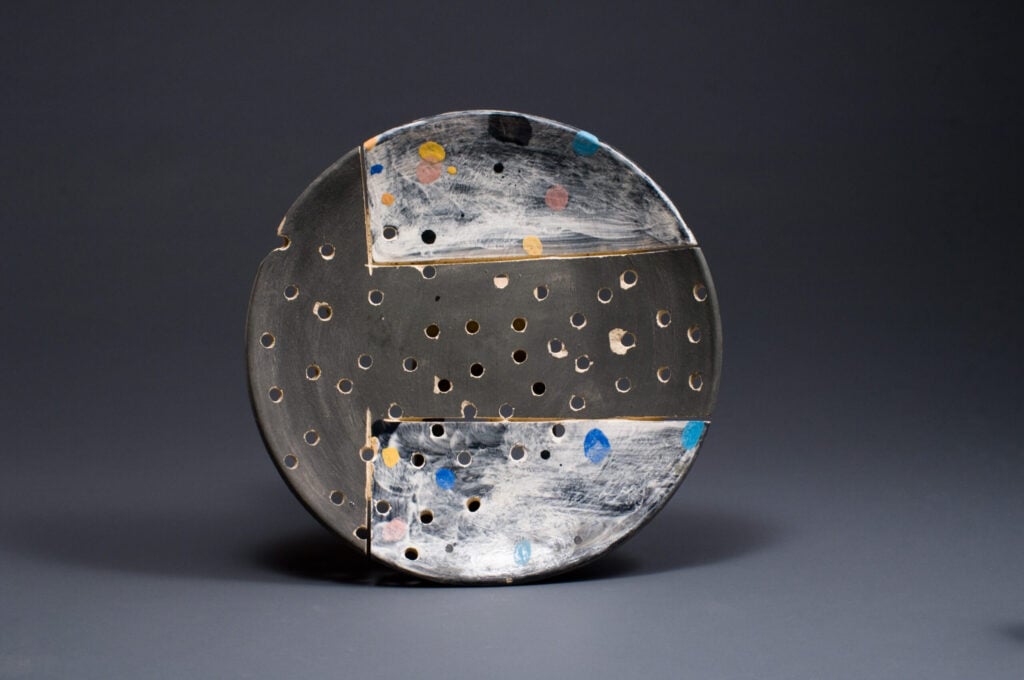
Untitled, Platter
1975
Hand built and glazed ceramics, 18.5 x 18.5 x 2.25 inches. Collection of the Ree & Jun Kaneko Foundation, Omaha, NE, USA.
Photo: Jun Kaneko Studio

Untitled, Platter
1975
Hand built and glazed ceramics, 19.25 x 19.25 x 2.25 inches.
Photo: Jun Kaneko Studio
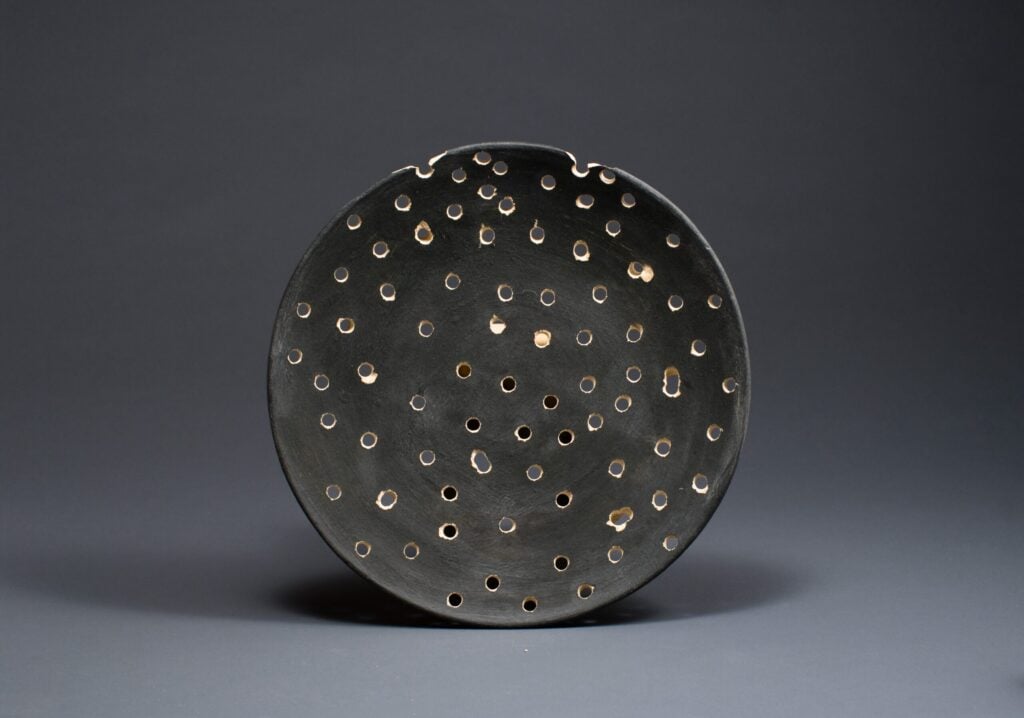
Untitled, Platter
1975
Hand built and glazed ceramics, 18.75 x 18.75 x 2 inches. Collection of the Ree & Jun Kaneko Foundation, Omaha, NE, USA.
Photo: Jun Kaneko Studio
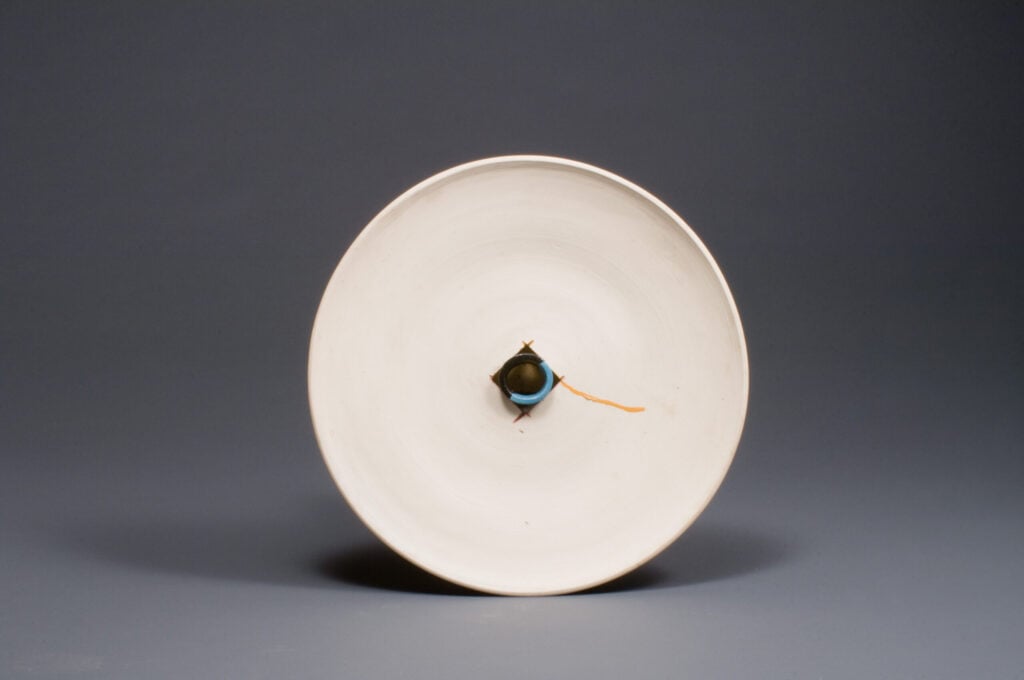
Untitled, Platter
1976
Hand built and glazed ceramics, 18 x 18 x 2 inches. Collection of the Ree & Jun Kaneko Foundation, Omaha, NE, USA.
Photo: Jun Kaneko Studio
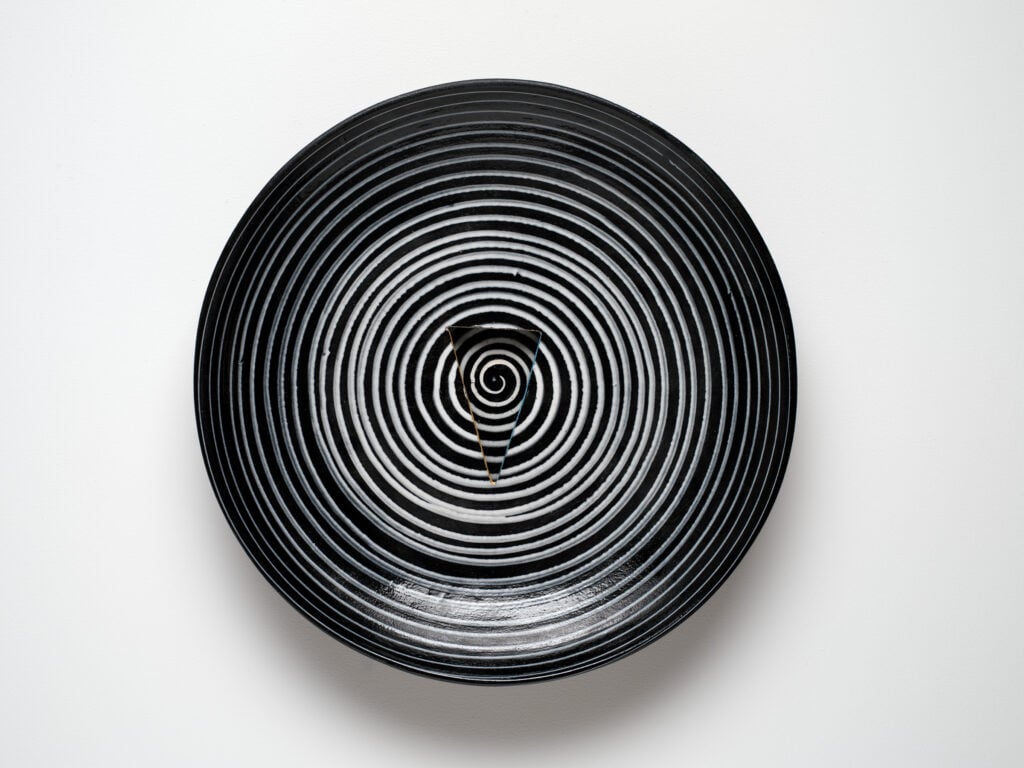
Untitled, Platter
1978
Hand built and glazed ceramics, 25 x 24.5 x 4 inches.
Photo: Jun Kaneko Studio
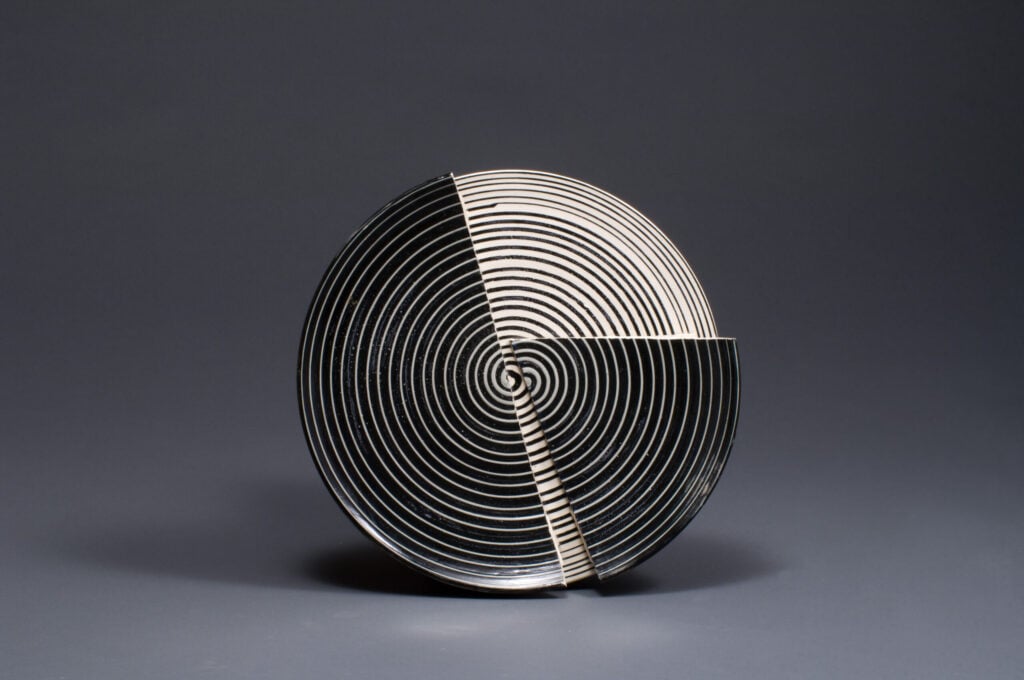
Untitled, Platter
1978
Hand built and glazed ceramics, 15 x 15 x 2 inches.
Photo: Jun Kaneko Studio
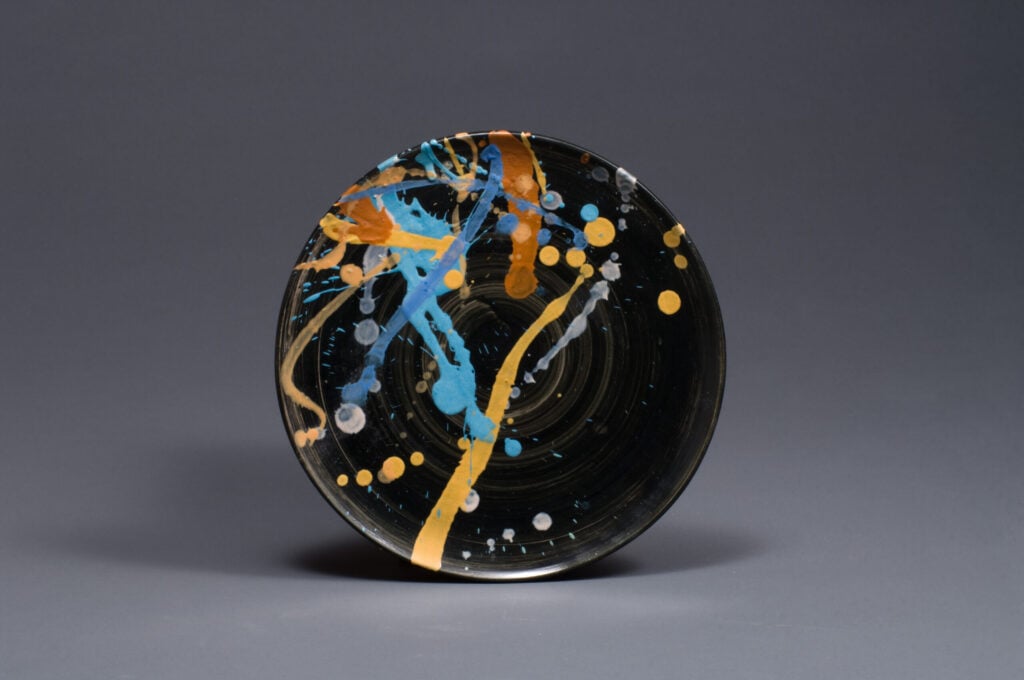
Untitled, Platter
1978
Hand built and glazed ceramics, 12.25 x 12.25 x 1 inches.
Photo: Jun Kaneko Studio
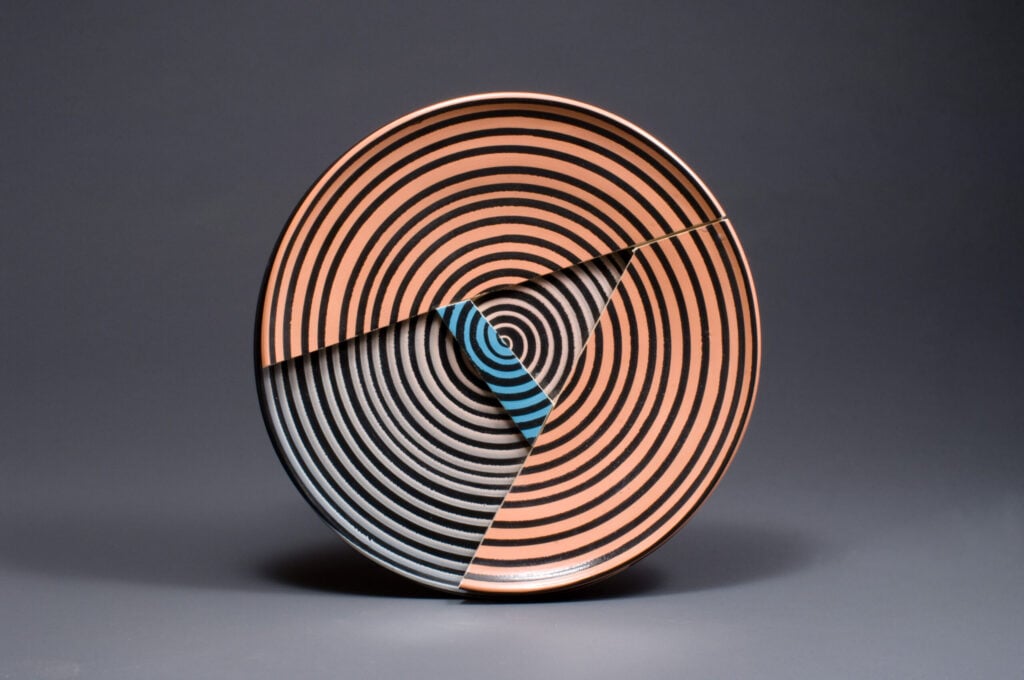
Untitled, Platter
1978
Hand built and glazed ceramics, 20.5 x 20.5 x 3 inches.
Photo: Jun Kaneko Studio

Untitled, Platter
1978
Hand built and glazed ceramics, 13.75 x 13.75 x 1 inches.
Photo: Jun Kaneko Studio
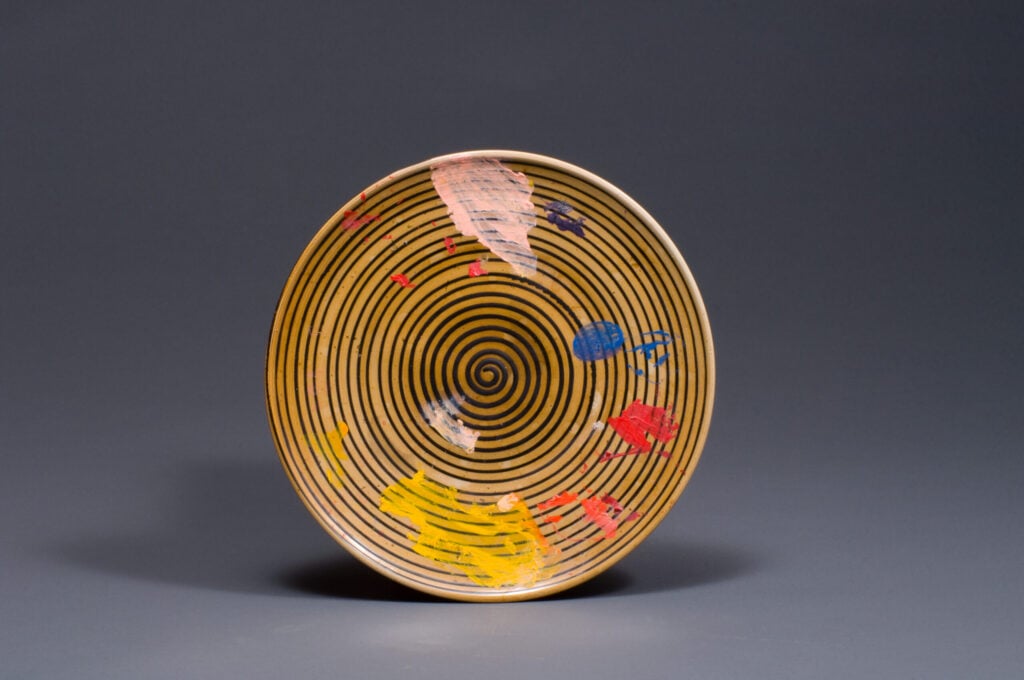
Untitled, Platter
1978
Hand built and glazed ceramics, 12.5 x 12.5 x 1 inches.
Photo: Jun Kaneko Studio
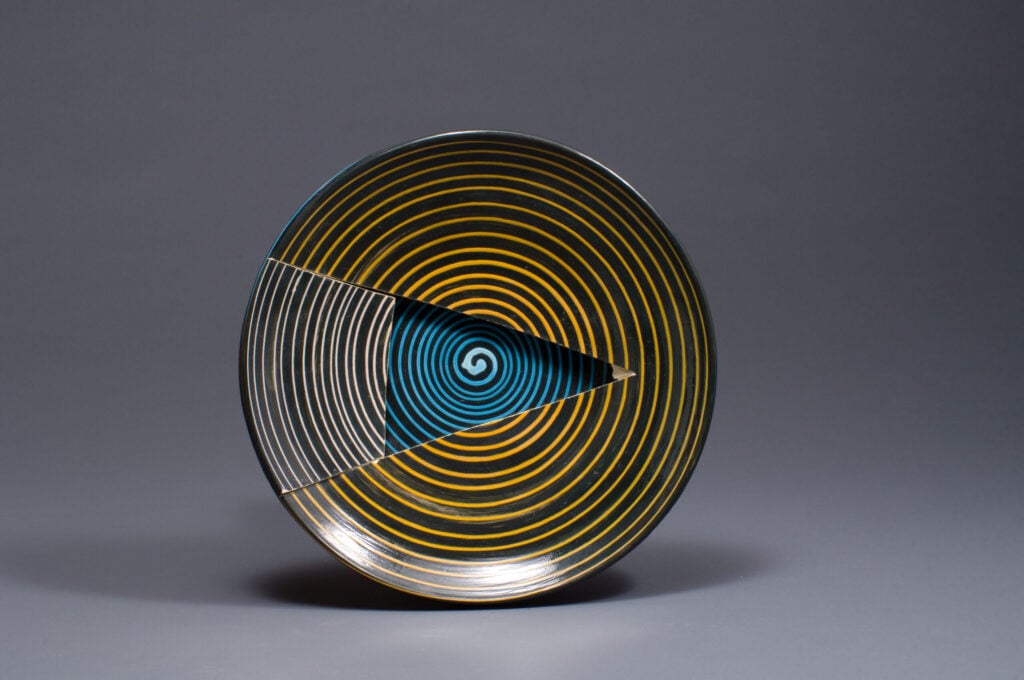
Untitled, Platter
1978
Hand built and glazed ceramics, 17.25 x 17.25 x 3 inches. Collection of the Ree & Jun Kaneko Foundation, Omaha, NE, USA.
Photo: Jun Kaneko Studio